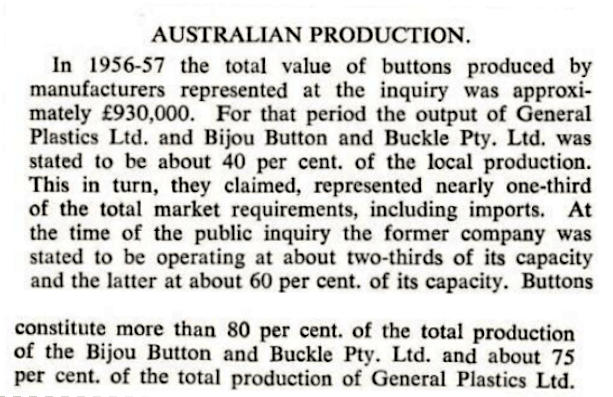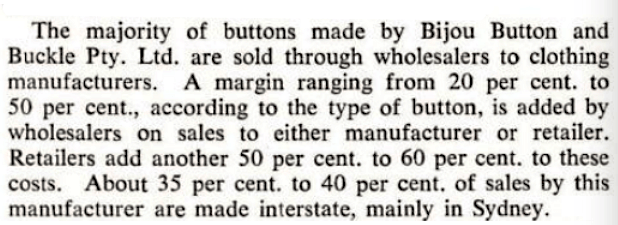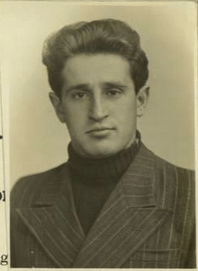Table of Contents
World War 2
The outbreak of WW2 changed everything. Manufacturers went into overdrive to supply military needs, sometimes under Government decree. Civilian production changed as well. Materials such as casein and bakelite were in such demand that they became ‘declared commodities’ under government control. Some previously imported haberdashery had to be rationed due to dwindling supply. The plastic industry underwent rapid growth, which would forever change manufacturing. Whilst shortages created problems, there were also opportunities.

Albany Advertiser, 16th November 1939 page 2.
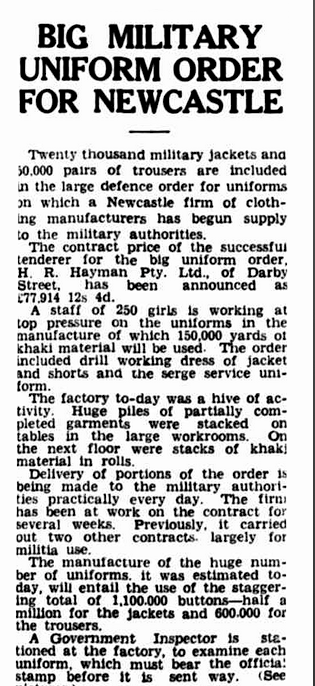
The Newcastle Sun (NSW), 10th November 1939 page 9.
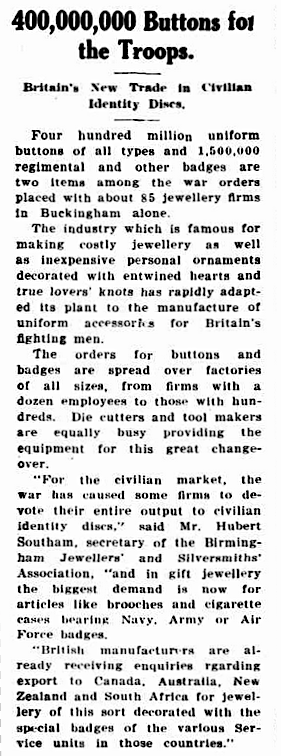
The Times and Northern Advertiser, Peterborough, South Australia (SA ), 22nd December 1939 page 2.
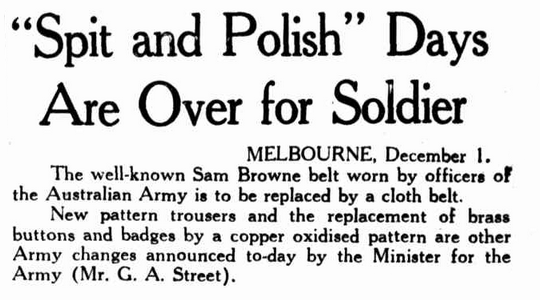
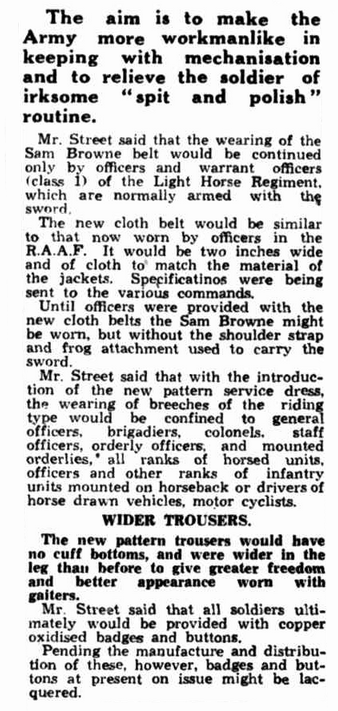
The Telegraph (Brisbane), 2nd December 1939 page 4.
1940
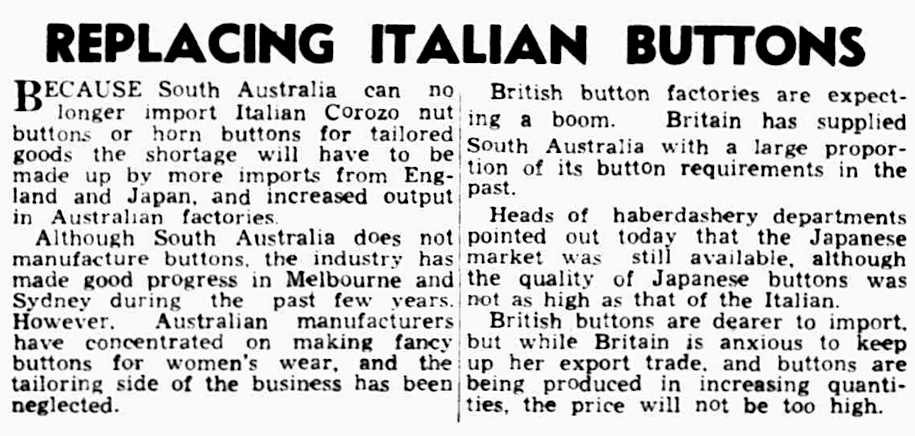
News (Adelaide), 17th August 1940 page 3.
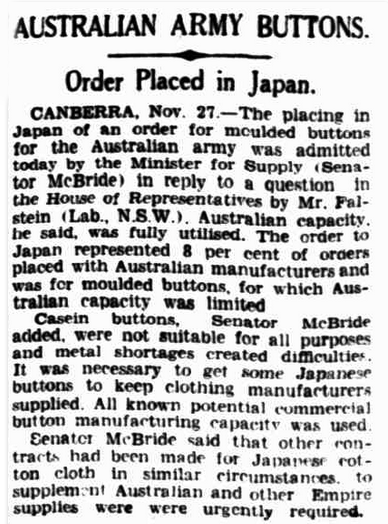
The West Australian, 28th November 1940 page 8.
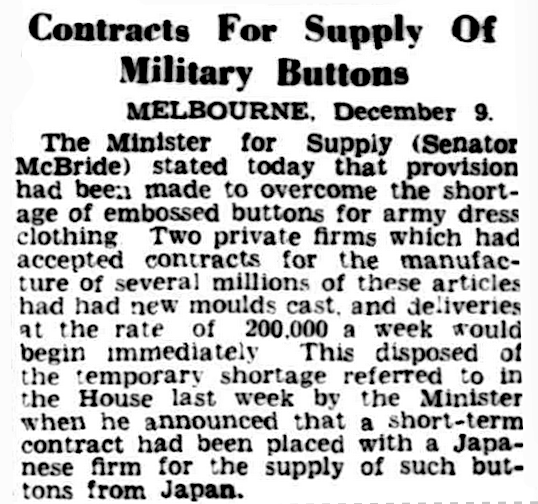
The Advertiser, 10th December 1940 page 14.
1941
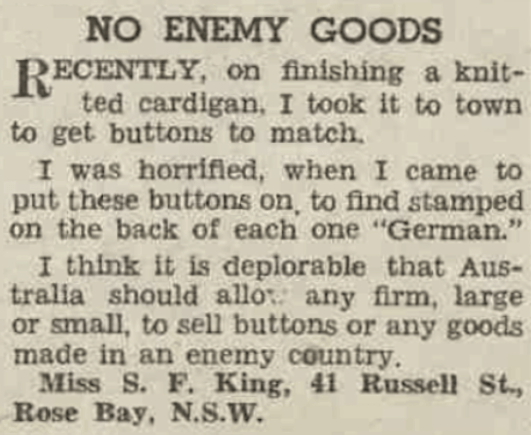
Australian Women’s Weekly, 14th June 1941 page 39. Feelings are running high!
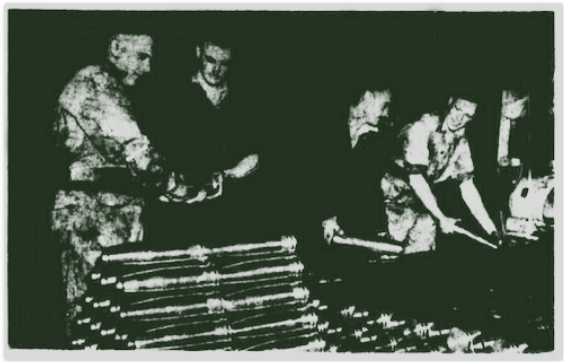
The Mercury (Hobart) 6th June 1941, titled “For Hitler”. The description reads: “Button and Shells are made under the same roof in a Melbourne factory now filling war orders. The buttons are for uniforms, the shells also will be put to good use. The picture shows shell workmen handling some of their products.”
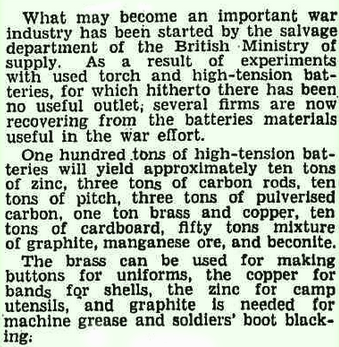
The World’s News (Sydney) on 20th September 1941 page 36. News of a clever recycling initiative.
In both world wars many people found work producing military requirements, but imagine being employed just to sew on buttons!

The Sydney Morning Herald, 1st April 1941 page 14.
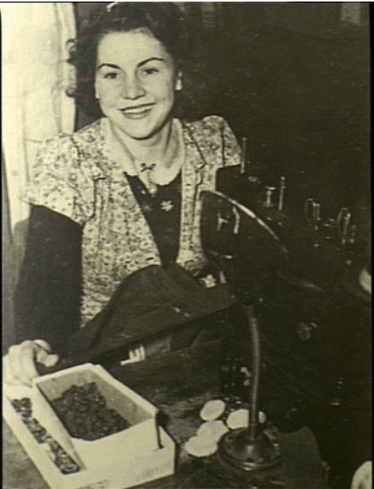
Australian War Memorial collection: A woman operates a sewing machine to sew on Army overcoats at the Commonwealth Clothing factory.” https://www.awm.gov.au/collection/C293579
1942-4
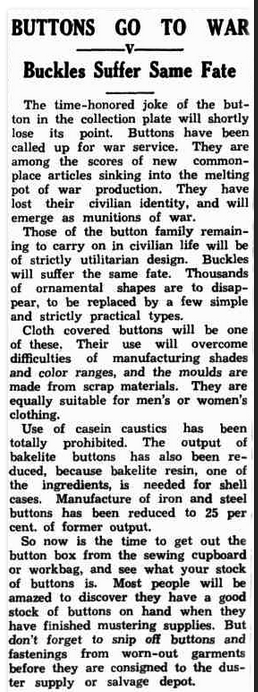
The Henty Observer (NSW), 12th June 1942 page 7.
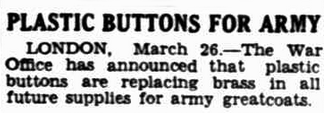
The West Australian, 28th March 1942 page 6.
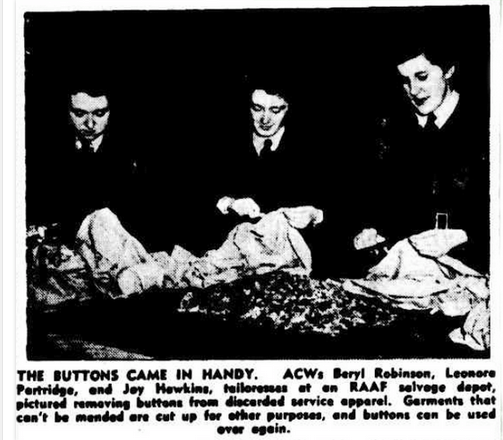
The Argus, 6th November 1942 page 6.
WW2 saw an increased demand for casein for manufacture of uniform buttons, paint, adhesives and also in aircraft production. Therefore, it became a ‘declared commodity’ with the price under government control and the export of casein powder banned. In 1947 local producers were asking for this ban to be lifted. People working in a wide range of employment, including button manufacturing , were not free to change employment without a permit. The following article describes how the sudden demand created both problems and opportunities for many manufacturers.
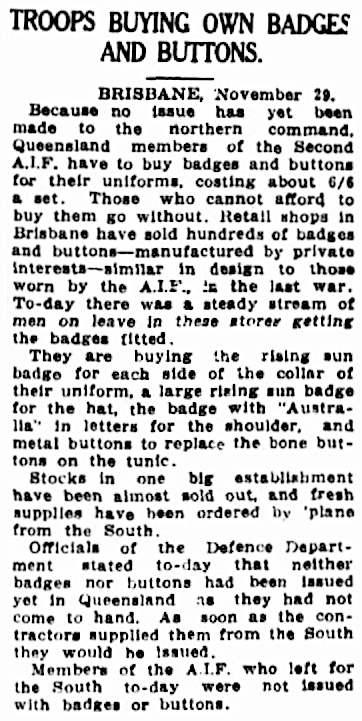
Queensland Times (Ipswich), 30th November 1939 page 6.
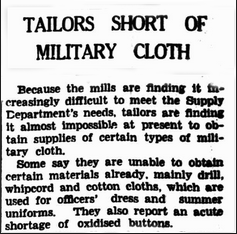
Tweed Daily (NSW), 25th January 1940 page 2.
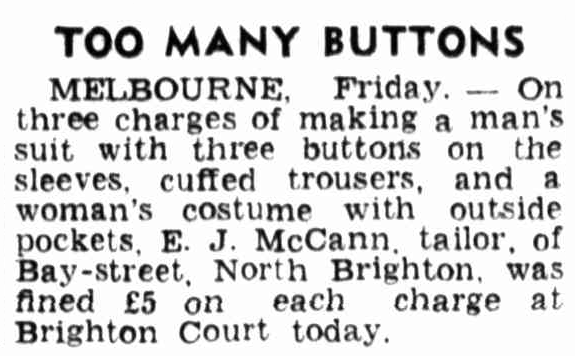
The Sun (Sydney) 24th December 1943. Oh, the waste!
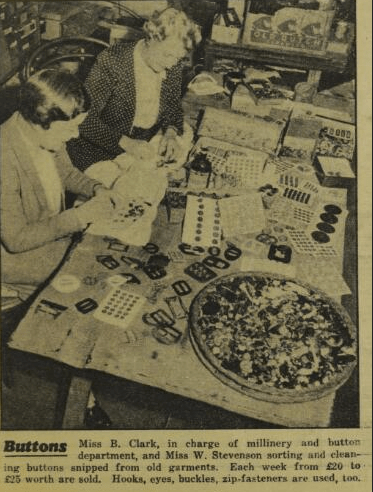
Pix magazine, 24th June 1944 page 21. The South Australia Girl Guide Thrift campaign was set up during WW2 to recycling clothing, twine, bottles, tin and so on, to raise funds for patriotic charities.
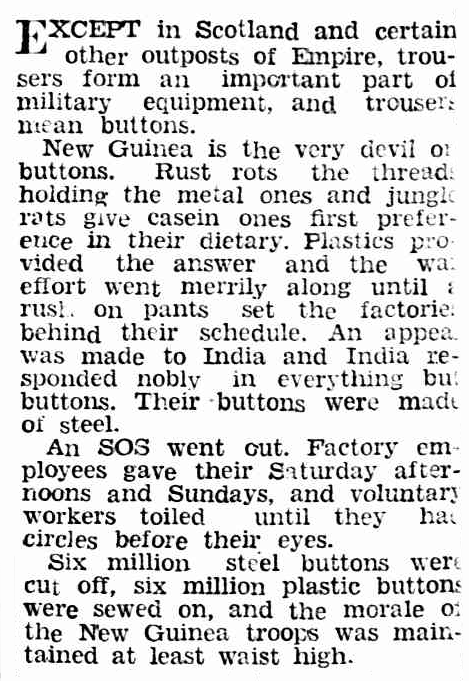
Tweed Daily (NSW), 17th January 1944 page 2.
1945 onwards
After the war, things did not simply go back to the way they were. Supply shortages still existed. For example, servicemen discharged from the army were given permission to wear their uniform complete with badges and buttons for up to 6 months after discharge due to difficulties for them all to obtain civilian clothing.
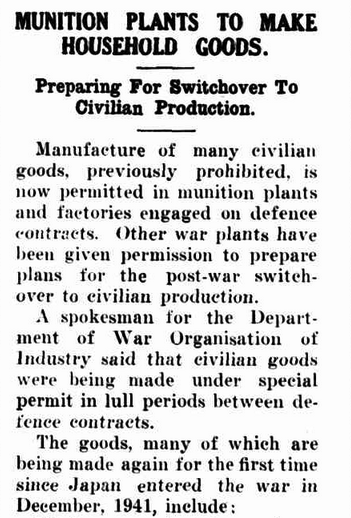
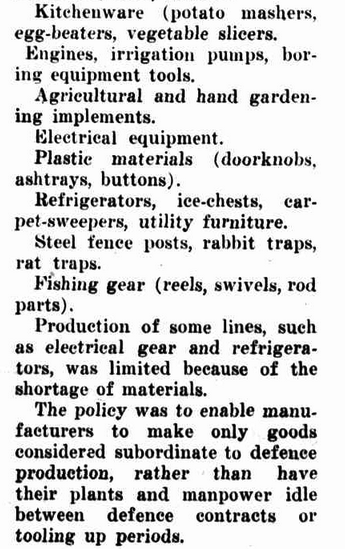
Commercial News and Shipping List, 1st June 1945 page 2.
Commonwealth Government war factories were rented out to private enterprise. A newspaper article reported that in Hamilton, Victoria, E. W. Tilley were to produce plastic buttons in such a factory. (This company also operated from 123 Latrobe Street, Melbourne from 1942 onwards.) Confidence returned as the economy switched over to post war production.
In 1945 no thermosetting ingredients were being made locally. By July 1950 C.S.R. Chemicals (Aust) Ltd. started local production of cellulose acetate. By 1953 Monsanto Chemicals (Aust) P/L started production of polystyrene in West Footscray. In 1959 local production also included phenol formaldehyde, melamine formaldehyde, urea formaldehyde and polyvinylchloride. In 1968 Nylex (formerly Moulded Products) started production of ABS plastic. These plastics were vital for many Australian manufacturing industries.
‘Statement’ buttons were popular after WW2 to decorate the otherwise austere style of clothing in vogue at the time. One local maker of these was Grant Featherston with his beautiful glass buttons (see separate page). Others were Marie Gardner and Gordon Andrews.
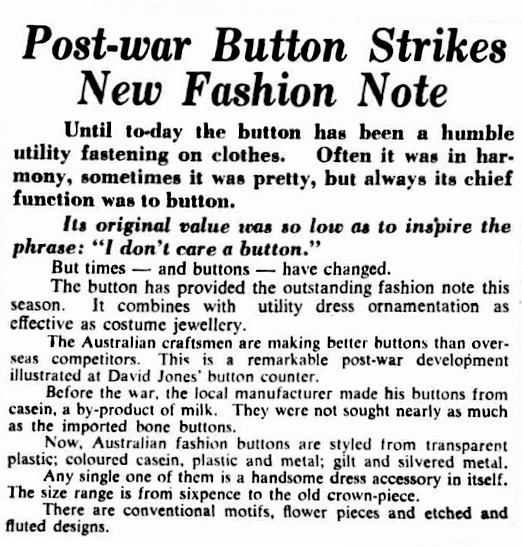
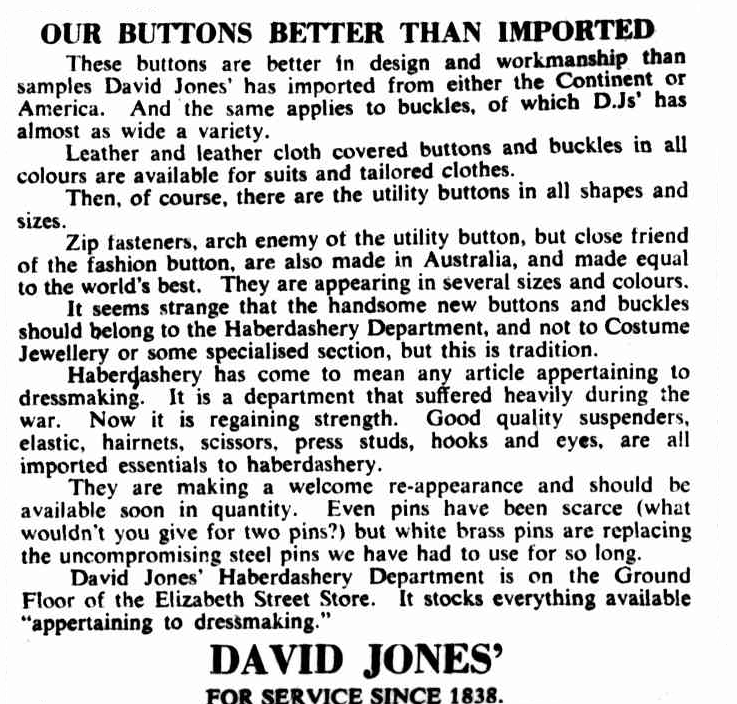
Sydney Morning Herald, 26th March, 1947 page 3.

These buttons are described as Australian made and casein, perspex, metal.
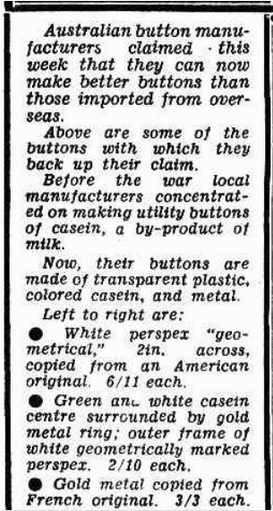
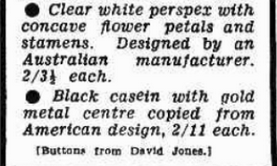
The Daily Telegraph (Sydney), 6th April 1947 page 7.
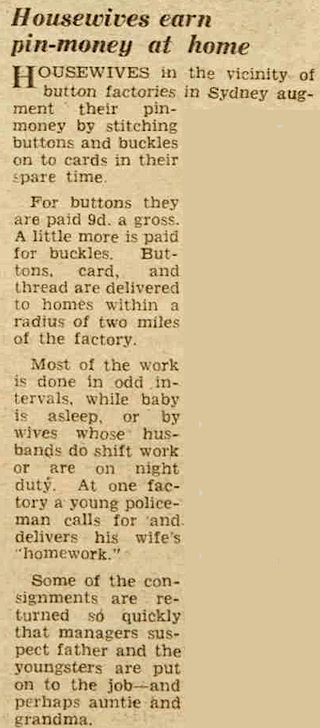
Australian Women’s Weekly, 2nd April 1949 page 20.
Pearl shell buttons were declining in market share, while plastics were booming. In the 1950s there were at least 4 major Australian button manufacturers (probably including General Plastics, G. Herring, Stokes & Sons) according to the following article …

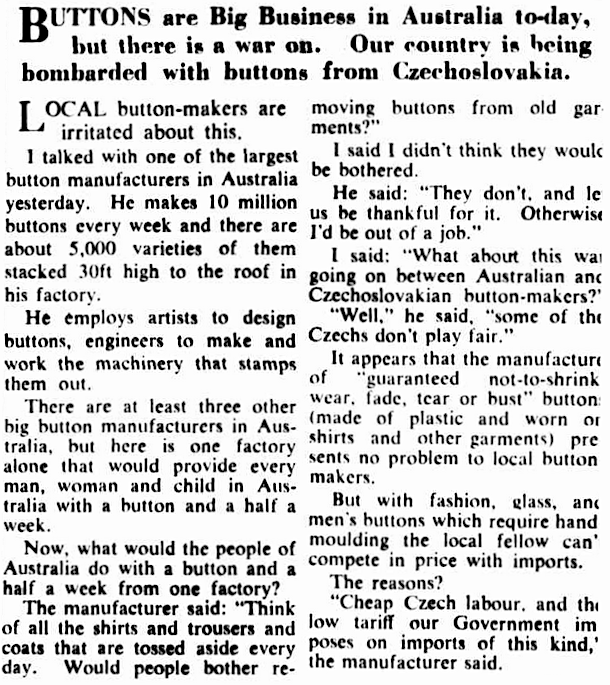
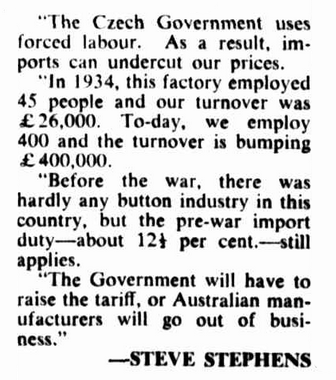
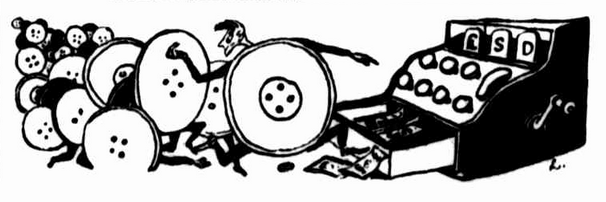
The Sunday Herald (Sydney), 8th October 1950 page 2.
1950 saw the start of a concerted and long running campaign by local button firms to discourage the use of ‘inferior’ imported buttons. According to the local companies, Australian buttons were technologically advanced. They were boil proof, detergent proof, and dry-cleaning proof. They would not fade, melt or damage clothing.It was claimed there were around 1000 employees of the button industry in 1950. What’s more, the rotten Commies were making profits from selling us their glass buttons!
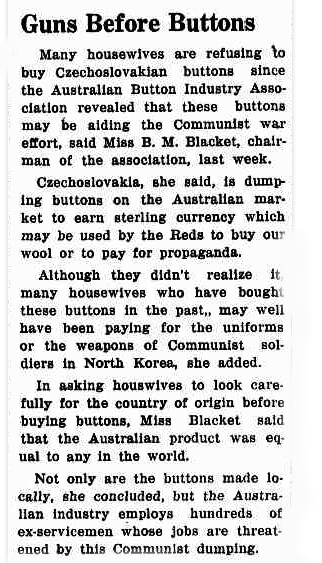
Pittsworth Sentinel, 10th October 1950 page 1.
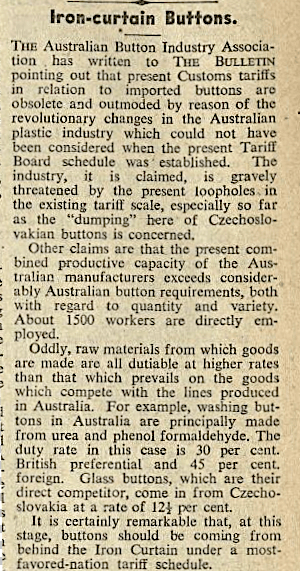
The Bulletin, 27th September 1950 page 7.
The Australian Button Industry Association was only ever quoted in regards to this one press release over a few month period in 1950. Did the association really exist, or did it fade quickly? Was it simply a spokesperson from one of the major manufacturers?
The campaign against inferior buttons, in cross-promotion with the dry-cleaning industry, was also due to the disappointing results achieved with polystyrene buttons. In 1947 America ceased production of these type.
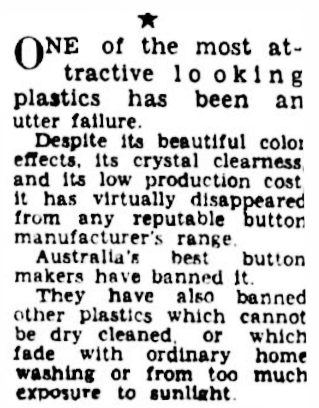
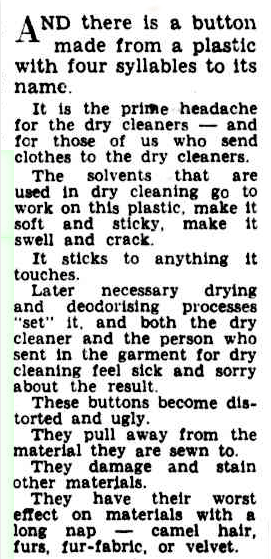
From a larger article in The Argus (Melbourne), 8th June 1954 page 24.
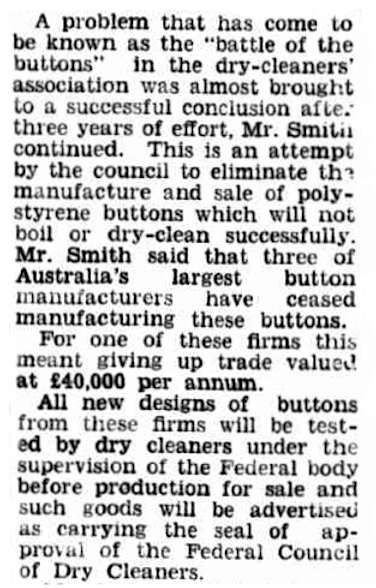
South Western Times, 2nd September 1954. Mr Smith was a West Australian dry-cleaner who had attended a national conference where “the button issue” was discussed.
In 1952 a report was released, “the Structure and capacity of Australian Manufacturing Industry” by the Commonwealth department of national development. It briefly mentioned button manufacturing:
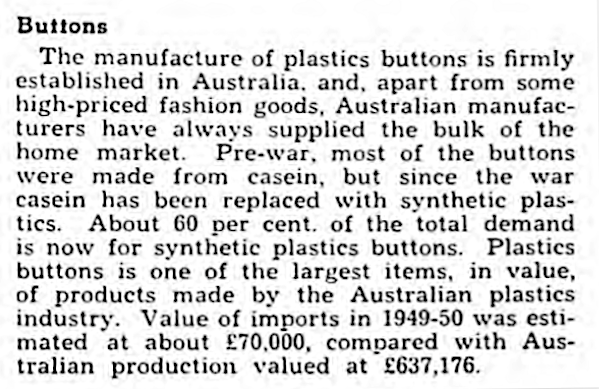
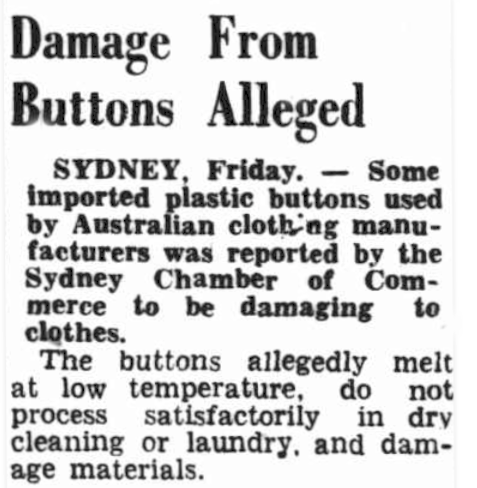
Northern Star, 15th March 1952 page 2.
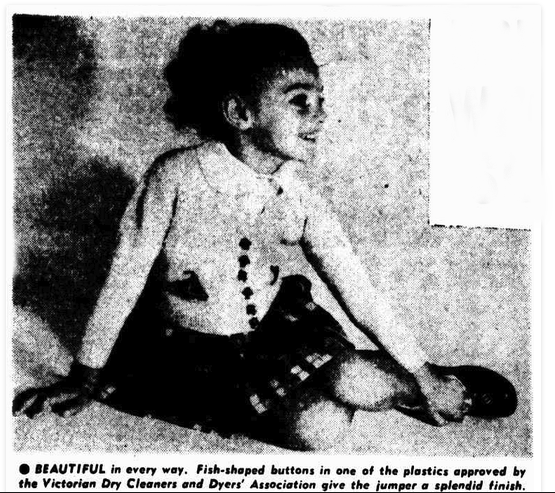
Part of a dry-cleaning feature published in The Argus, 8th June 1954 page 23. The buttons are by Beauclaire.
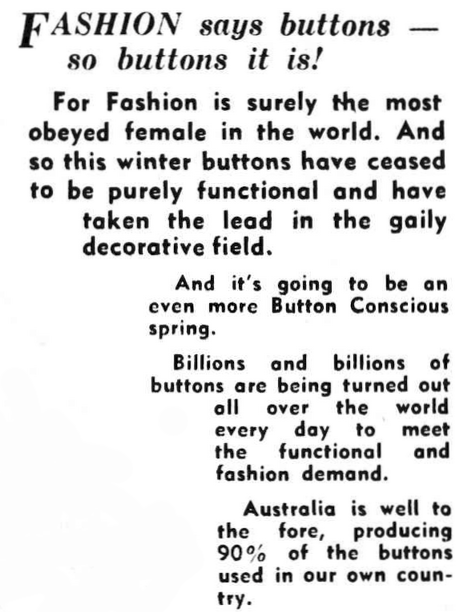
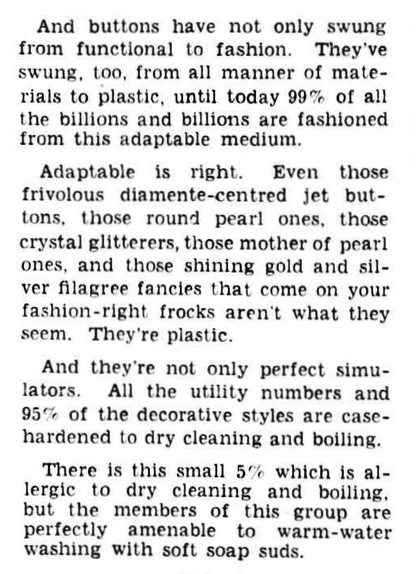
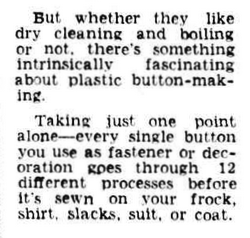
The Argus (Melbourne), 24th June 1954 page 9.
According to this article from The Argus, 24th June 1954, page 9, Australia was producing 90% of the buttons used in the country, and 99% of the billions of buttons produced world-wide were by now made from plastic. “Even those frivolous diamente-centred jet buttons, those round pearl ones, those crystal glitterers, those mother of pearl ones, and those shining gold and silver filagree fancies that come on your fashion-right frocks aren’t what they seem. They’re plastic.”
In 1970-71 a Government report was released that looked at casein button blank production in Australia and New Zealand. It noted that Bijou and Maxart used imported casein sheets and blanks for their buttons, mainly from New Zealand. Beutron and D.C, Quinn made their own blanks. The report further noted that …
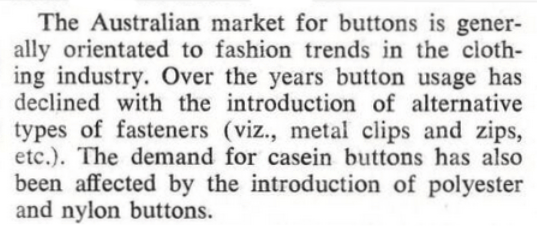
1970-71 Government report regarding (amongst other items) casein.
Plaited Leather Buttons
While leather buttons were used before this time, they seem to become more popular after WW2 particularly on sports/tweed coats and jackets (borrowing perhaps from military uniforms). A local industry sprang up to meet the demand. Many European and Jewish immigrants set up in the ‘rag trade’ at this time. Some would use outworkers to hand plait strips of leather into buttons in their homes that would be collected, dyed, varnished and carded to be sold to shops and tailors. They were also made by “crippled children”.
BUTTON INDUSTRY AT SPREYTON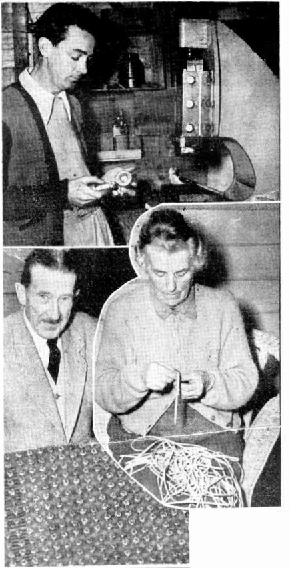
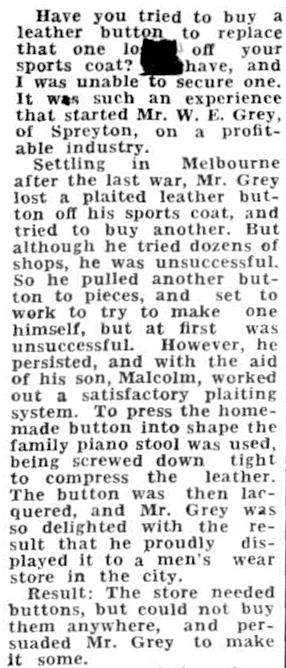
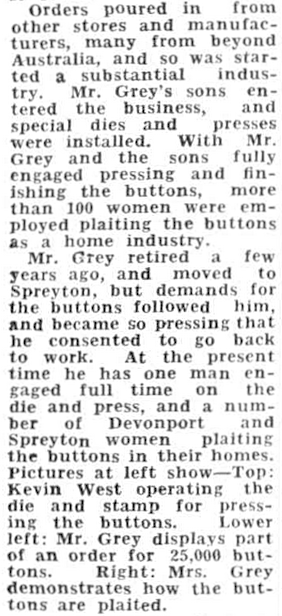
Advocate (Launceston), 5th August 1954 page 2.
Mr Grey started his business after WW1 (‘the last war’) and was quite successful. A bit of detective work has uncovered that (despite being reported as W. E. Grey, or W.H. Grey in the below advert) his name was actually William Maxwell Gray. So much for accuracy in journalism! He was born near Kobe, Japan in 1889 and died in 1960 in Tasmania. His wife, demonstrating leather plaiting in the photo, was Helen Gray.

Advocate (Burnie) 1st May 1954. page 11.
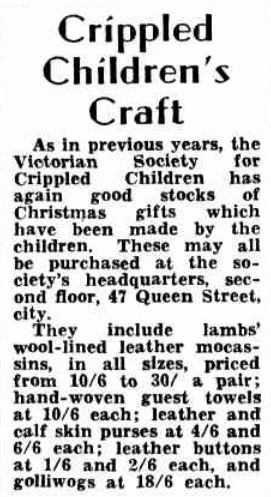
The Age (Melbourne) 17th December 1953 page 5.
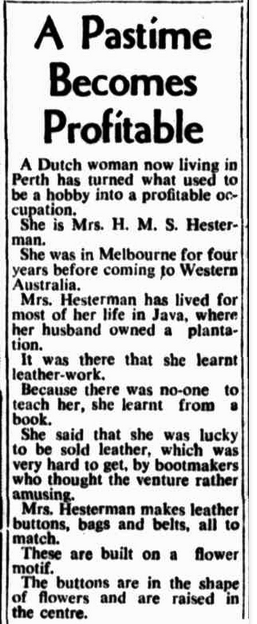
The West Australian, 23rd April 1953 page 21.
One of the people to get involved in this industry was Wilhelm (Willy) Friedhelm, a Czechoslavakian who came to Melbourne after the war to start a new life. Ladies at home could make plaited leather buttons by the gross as outworkers, earning some extra money to help with household expenses. The knotted buttons were collected for finishing. They were then soaked in dye, dried, pressed into shape in moulds and lacquered. A lady who used to make buttons for him gave a talk about her experiences at the Victorian Button Collectors’ Club in 2014. Mr Friedman ran this business until he retired in about 1977. The local trade eventually suffered from competition with cheaper leather buttons imported from China.
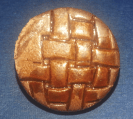
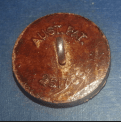
An example of plaited leather (or ‘football’) buttons can be seen below.
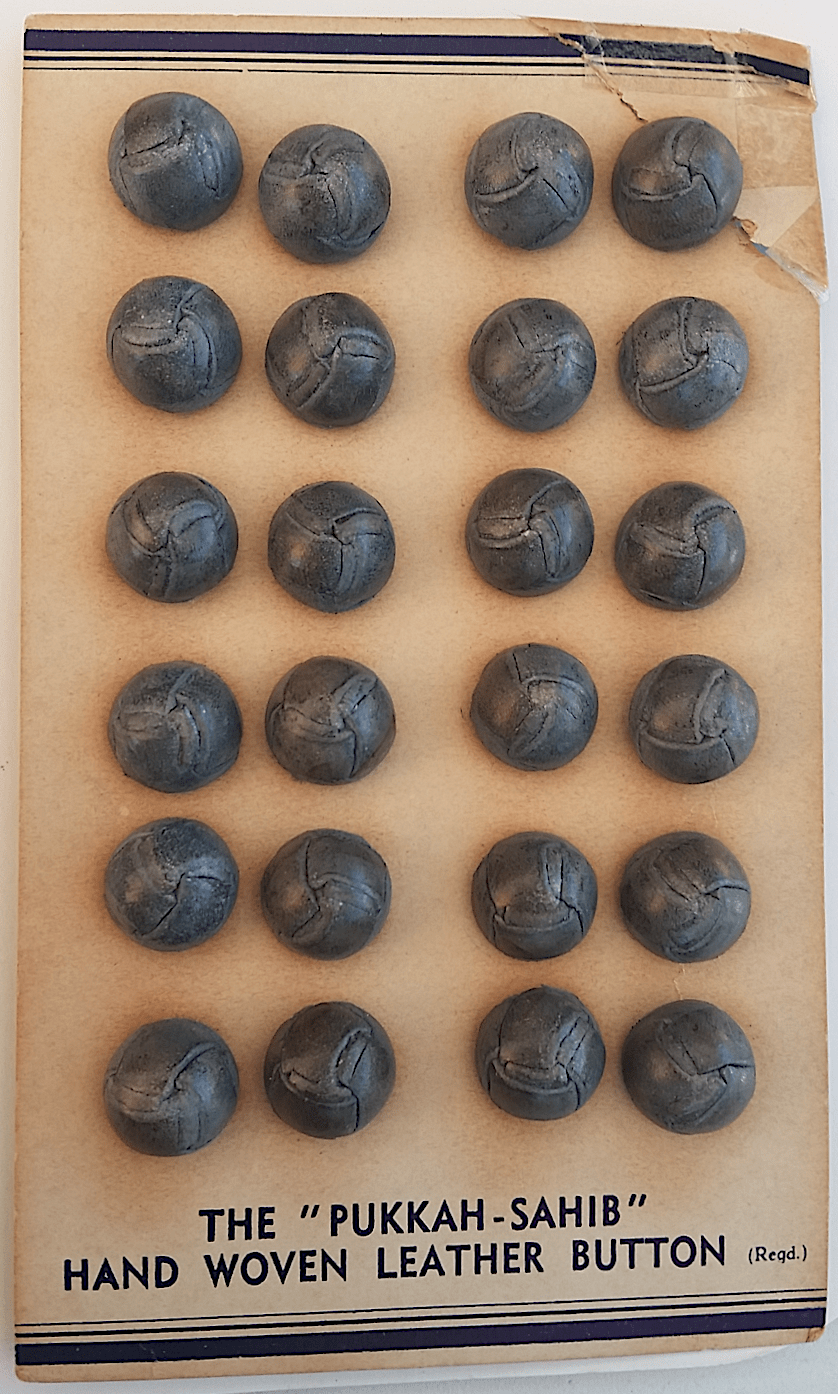
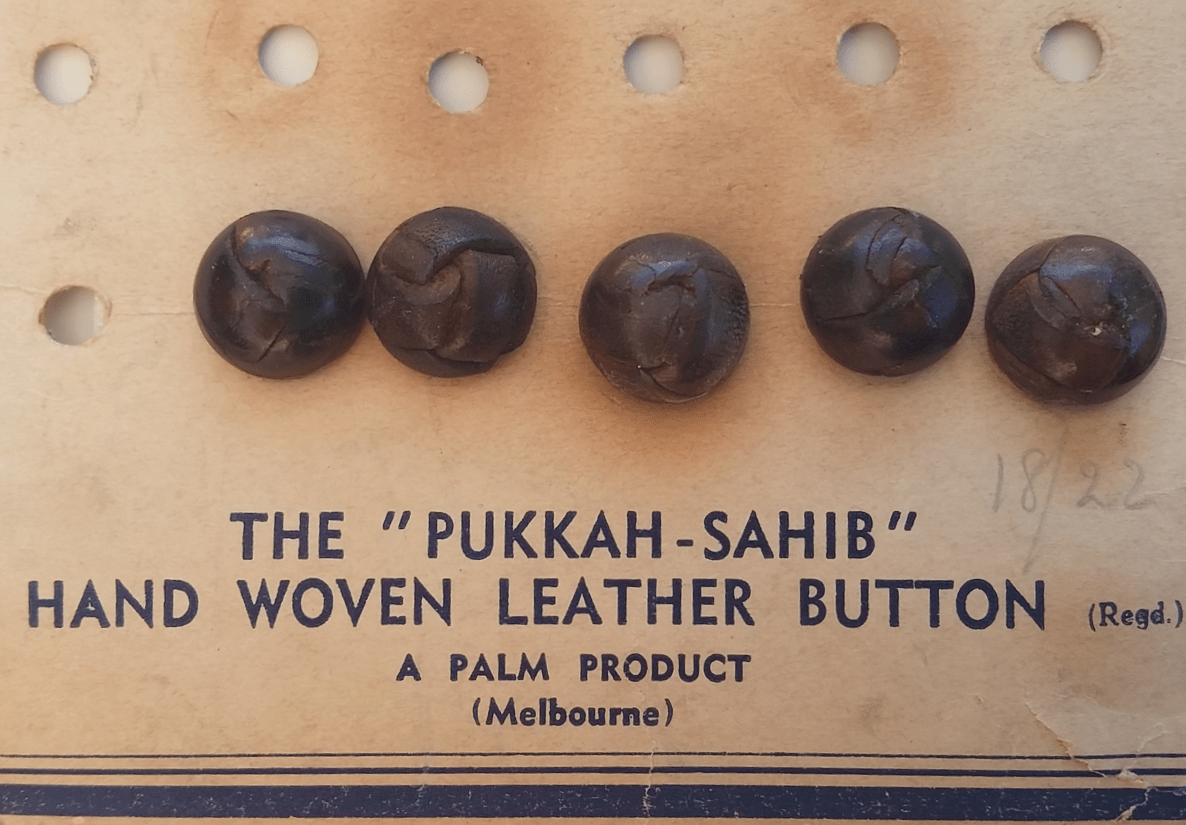
Artists and Manufacturers
ALA, Sydney
Another producer was Austrian born Anna Louise Alma who had moved to Sydney. Her buttons were sold between 1947 to around 1957 in the ALA shop in Rowe Street. She then managed the ANINA jewellery shop with Niina Rätsep that was located at 21 Rowe Street, Sydney until her death in 1961.

Anna Louise Alma’s signature.
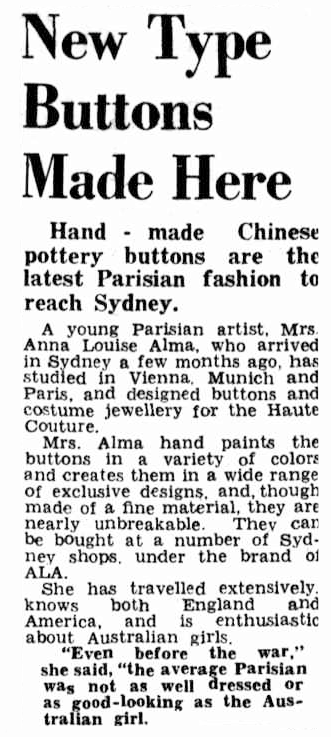
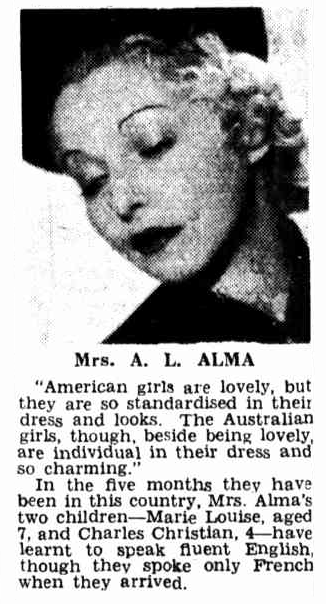
The Sun, 20th October 1947 page 8. The ad below probably refers to her buttons.
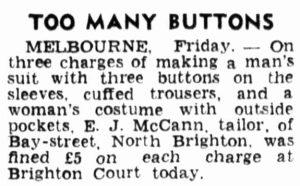
The Sun (Sydney) 24th December 1943. Oh, the waste!


Sydney Morning Herald, 26th March, 1947
The Sun (Sydney), 27th September 1950 page 8.
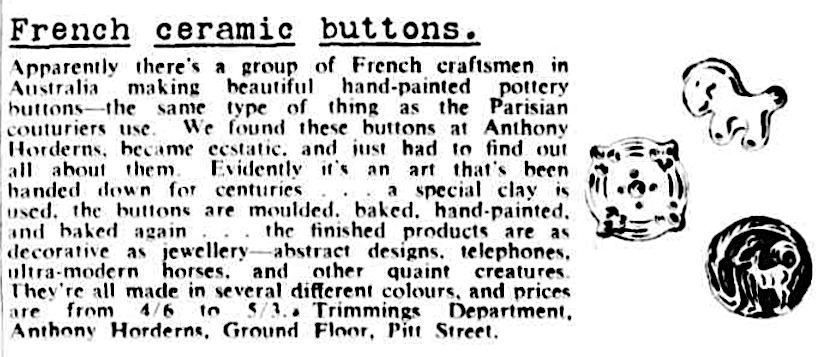
Albany Advertiser, 16th November 1939 page 2.

The Daily Telegraph (Sydney) 6th May 1948 page 13.
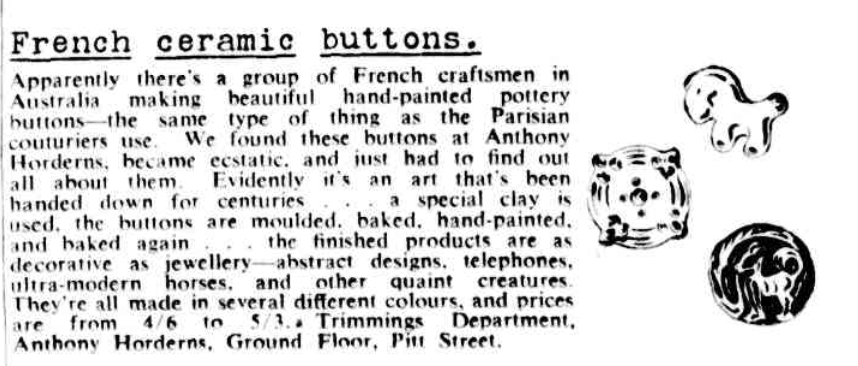
Herald (Melbourne) ,1st February 1949 page 9.
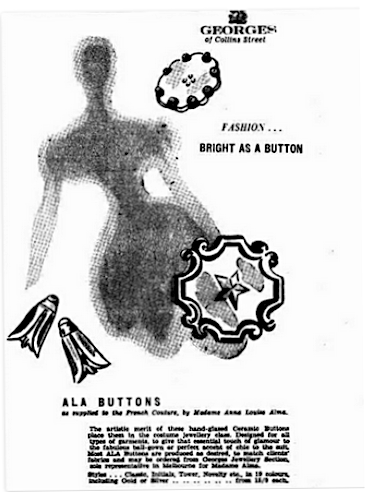
The Argus (Melbourne), 11th June 1949 page 5.
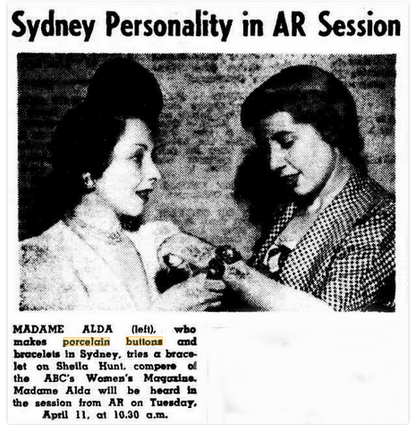
The Age, 6th April 1950 page 1.
For some beautiful examples of ALA buttons in the MAAS collection, see:
https://collection.maas.museum/object/373025
Button designs submitted for patenting by Anna Lousie Alma in the years 1947-49. They were copied with permission from the National Archives office in the Old Parliament House in Canberra.
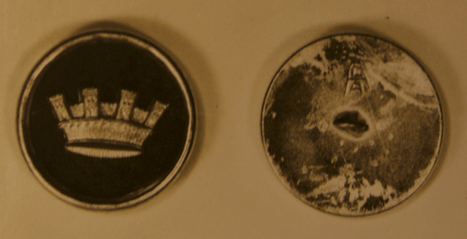
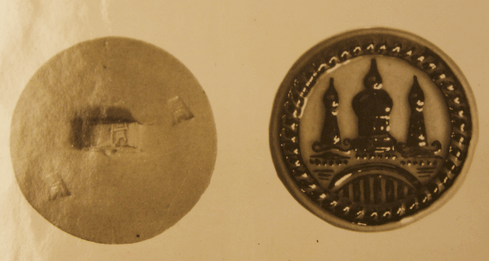
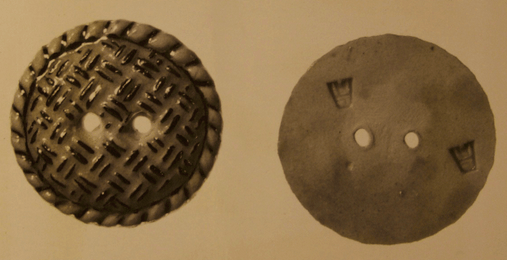
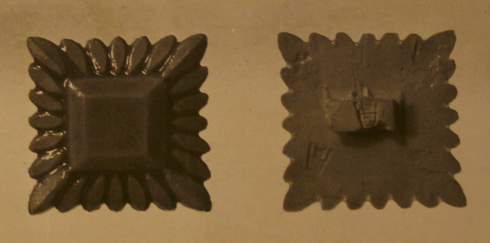
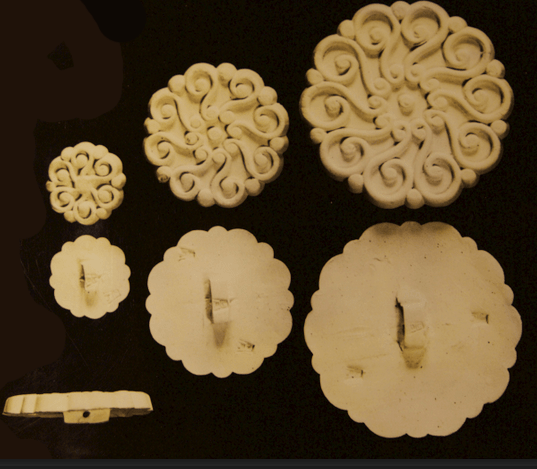
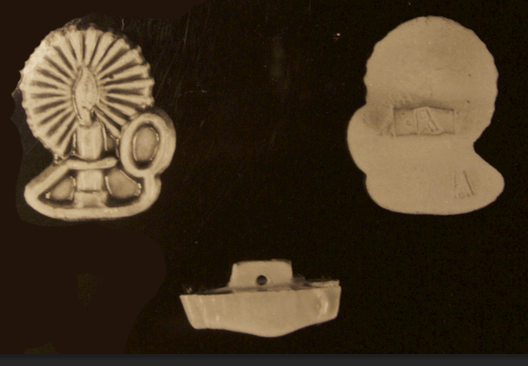
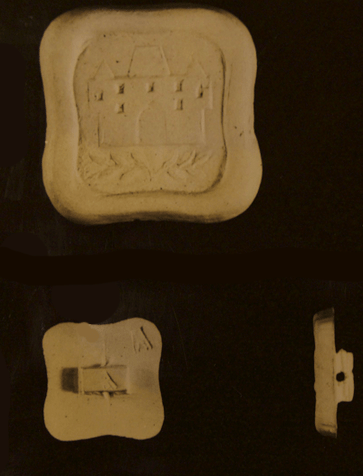
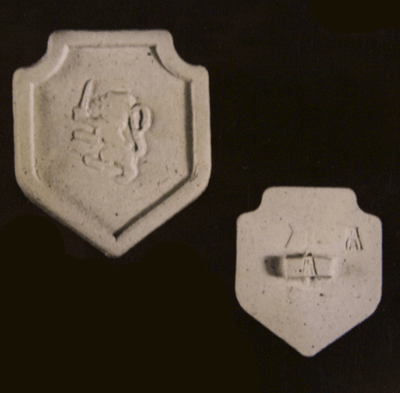

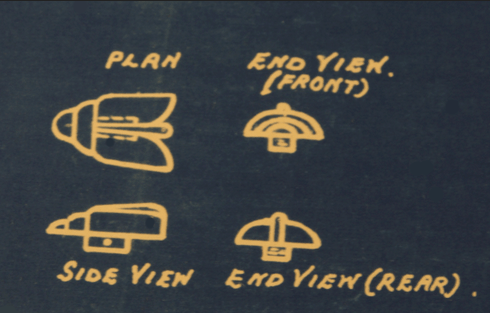
This design is seen in the George’s advert: detail to the right.
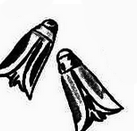
ALWATCO, Sydney
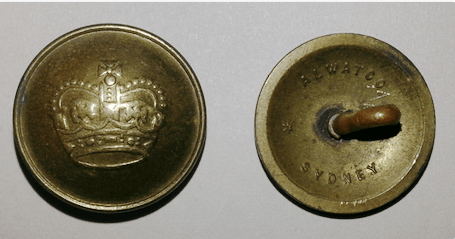
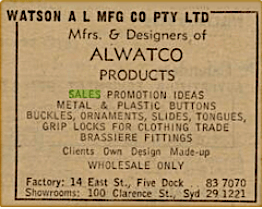
SYDNEY DIRECTORY 1960.
ALWATCO” stands for A. L. Watson Manufacturing Company Pty. Ltd., who made or supplied buttons and buckles as well as other products, on a wholesale basis only. It existed from July 1954 – July 1999.
Badge A Minit, Adelaide
This is a South Australian button and badge making and equipment company in Norwood, established around 1984.
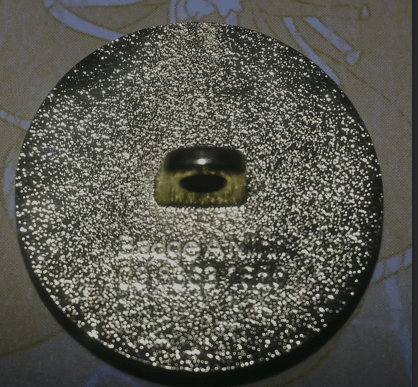
The back of a school uniform button.
Barwon Button and Buckle Company Pty. Ltd., Geelong
In August 1939 this company commenced operating in Geelong. It was to “manufacture from Australian Casein articles which were previously made in Germany. A modern plant has been installed and is under the management of a skilled Continental technician. The establishment of the factory should be a benefit to the community…” By September they were making, and about to market “a large range of buttons, buckles and dress ornaments.” Forty machines had been installed. The company deregistered in July 1944.
The owners of this business were Thomas Karran Maltby (1890-1976) and S. E. Orchard (1894- 1975). Maltby was a Geelong Real Estate agent, and Member of Parliament for thirty-two years from 1947. He was knighted in 1949.
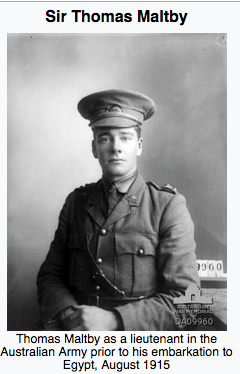
From Wikipedia.
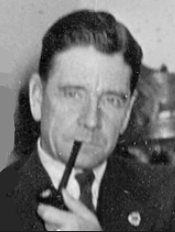
Detail from a group photo in State Library Collection of Major T. K. Maltby. See https://viewer.slv.vic.gov.au/?entity=IE151526
Bijou Button and Buckle Manufacturing Co., Melbourne
In 1938 the Bijou Ornaments Manufacturing Company started at 132 Queensberry Street, Carlton. In 1939 it became a propriety limited company with Nitalis Barski and William Hoffman as directors.
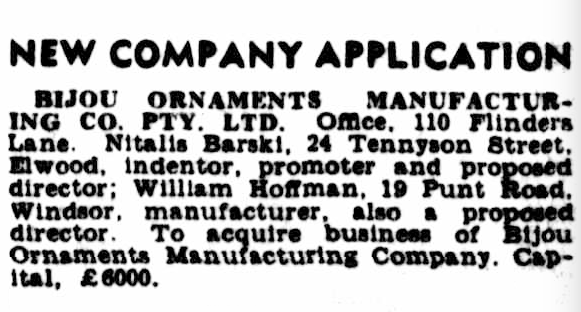
The Herald (Melbourne) 25th October 1939.
They advertised as button manufacturers. In October 1939 they advertised their office as located at 110 Flinders Lane, though the manufacturing stayed at Queensberry Street until 1940. In 1942 they were in liquidation.
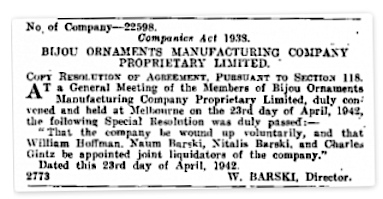
The company was revived as the “Bijou Button and Buckle Manufacturing Co.” in the Leroy Buildings, Higson Lane (opposite 129 Flinders Lane) under the management of the widow (Elsie Gintz) of one of the listed liquidators (Charles Gintz. who had died in 1943).
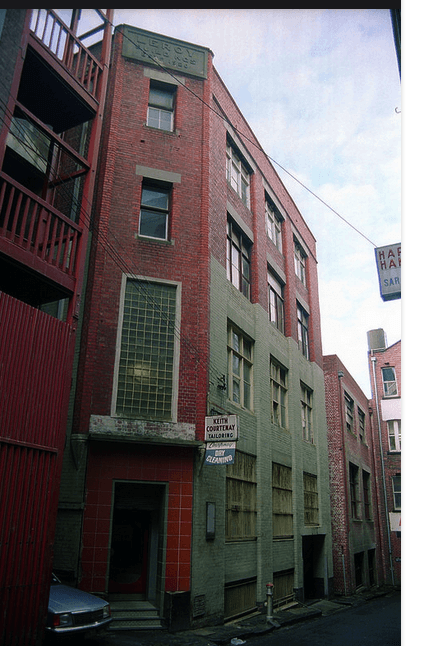
The Leroy Building in 1985, prior to demolition. It had been rebuilt after fire in 1919 from a building existing prior to 1914.
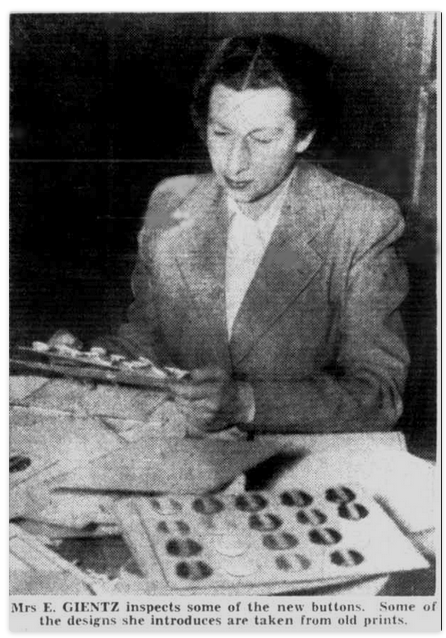
Weekly Times, 6th November 1946. Note the miss spelling of her surname.
Karel (Charles) and Eliska (Elsie) Gintz had fled to Melbourne from Czechoslovakia in 1939. As her husband became unwell and then died in 1943, she had gradually taken over management of the factory, despite not having previous experience. During the war the entire output diverted to military stock. In 1946 the article about her in The Weekly Times claimed there was only one other factory of this type in Melbourne at that time. She died in 1974.
To see the whole article: https://trove.nla.gov.au/newspaper/article/224423420?searchTerm=Mrs%20e%20gientz%20%20%20%20%20%20%20%20%20%20%20%20&searchLimits=sortby=dateDesc
Mr Alan Hearst migrated to Melbourne in 1949 and went into partnership in the company. He sold the firm to Maxart at some stage after July 1958.
Details from 1958 Tariff Report
British Novelties Pty. Ltd. and Datar Products, Sydney

The Daily Telegraph, 15th May 1940 page 13.
British Novelties started in 1940. It advertised for tradesmen and factory workers, producing products such as cigarette cases and buttons and was located at 144 Mallett St, Camperdown, NSW. In 1942 a plastic products company, Datar Products, was started.

Wise’s Post Office Directory, April 1942
By 1946 Datar had moved to the same address as British Novelties, and was making button blanks.

Wise’s Post Office Directory, 1948.
In 1953 the owner of Datar Products was applying for British Novelties to be wound up. What had happened? Had British Novelties collapsed? Had Datar been providing button blanks for British Novelties, and not been paid? Had the two companies merged? There were problems, as there were law hearings related to equity (whatever that means) in the District Court of NSW. I have not found out how long Datar existed for; it may have collapsed along with British Novelties.

Dun’s Gazette, 27th November 1953.
Datar made Brighton branded buttons (note their address on the sample card.)
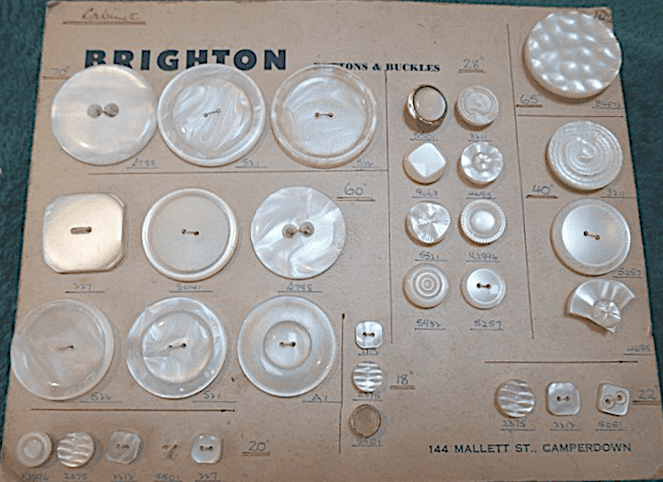
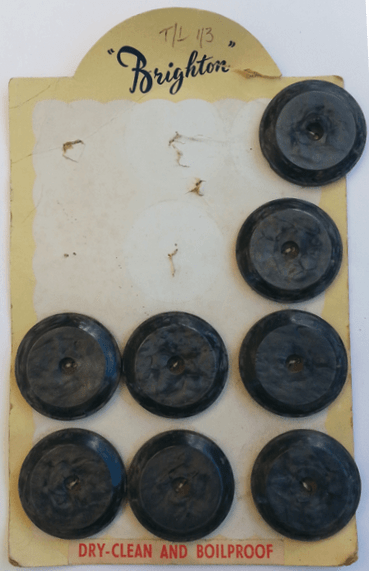
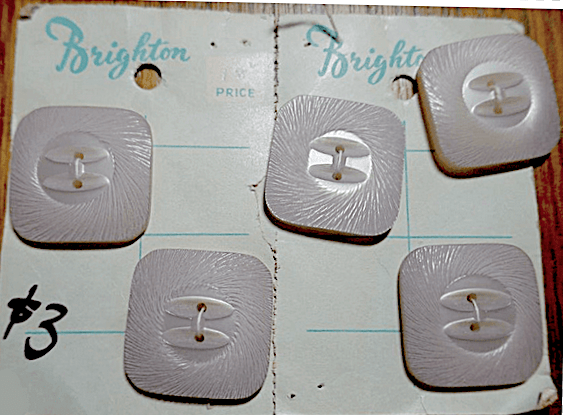
Empire Die & Tool Works Pty. Ltd., Sydney
This company was registered in 1940 as die makers, die sinkers, iron founders, and tool makers in Sydney, New South Wales. They operated from a garage and workshop in Cathedral Street, Woolloomooloo. Like many in manufacturing, they became involved in the war effort, producing uniform buttons. The company was wound up in 1950.
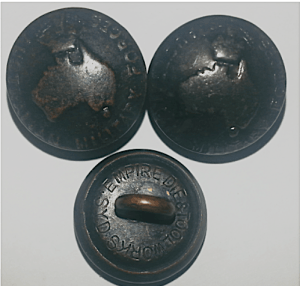
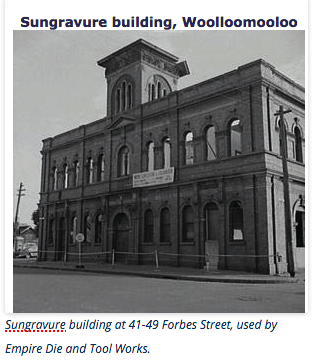
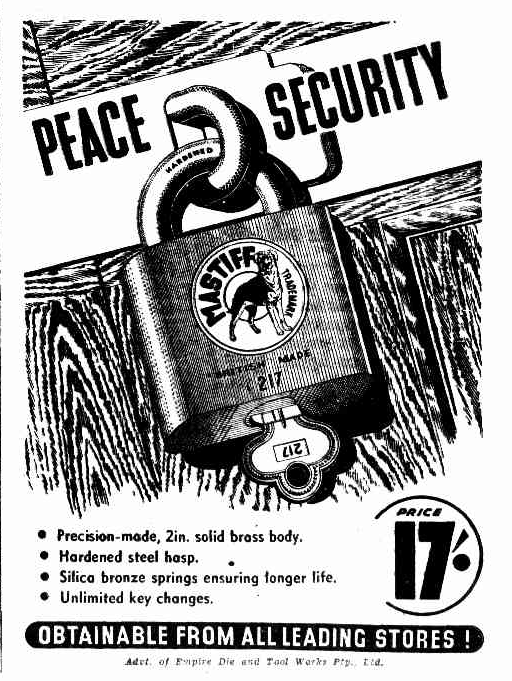
The Daily Telegraph (Sydney), 22nd June 1946 page 27. Advert for a more typical product
Gordon Andrews, Woollara
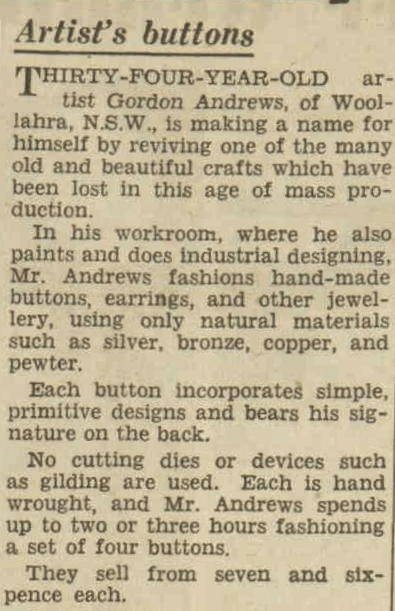
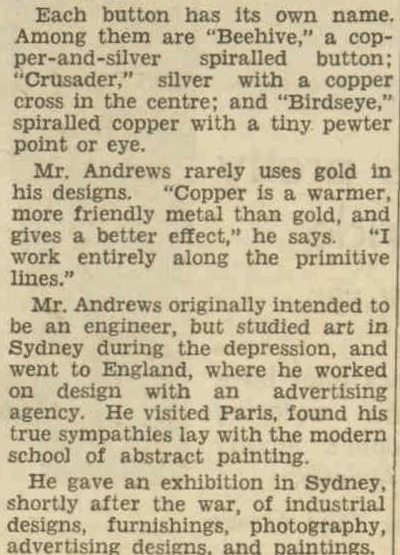
Australian Women’s Weekly, 13th march 1948 page 18.For examples of his buttons:
https://collection.maas.museum/object/138047
J. G. Lloyd and Company Pty. Ltd., Carlton
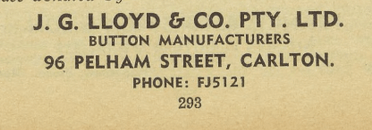

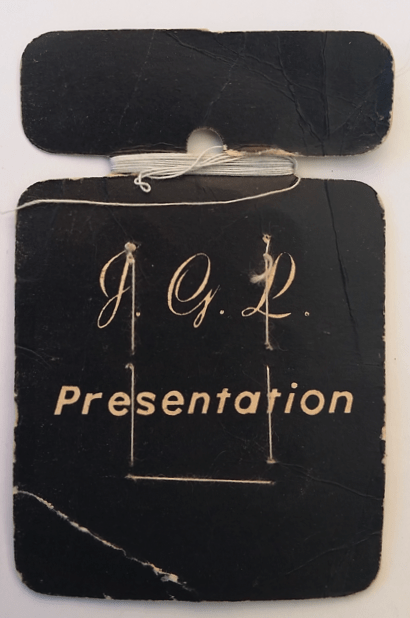
On the back of these 2 button cards is printed “J.G.L. presentation”.
John George Lloyd, of Hungarian descent, fled from Austria to Australia in 1939 and established J. G. Lloyd and Company Pty. Ltd. the following year. The company operated at Goldie Place and Elizabeth Street, Melbourne in the 1940s, before moving to 94-106 Pelham Street, Carlton. They supplied buttons for the military from 1941-1957. They produced plastic buttons as well as vials, jars, toys, jewellery, hair ornaments, kitchenware, electrical fittings and hardware. The company was still around in 1965. These cards copy G. Herrings design of adding cotton to the card of buttons. In 1958 they lost a court case against G.eneral Plastics over this issue, so perhaps J. G. Lloyd copied it too.
From the 1958 Tariff Report
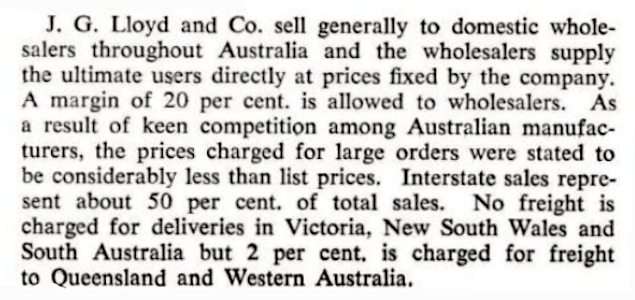
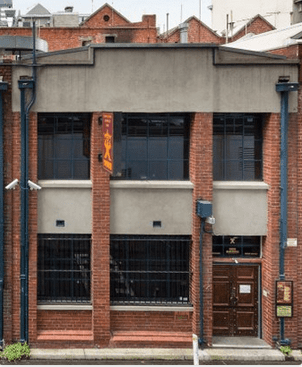
14 Goldie Place, Melbourne. Built inc.1925, it was the site of Lloyd’s business in 1944-46.
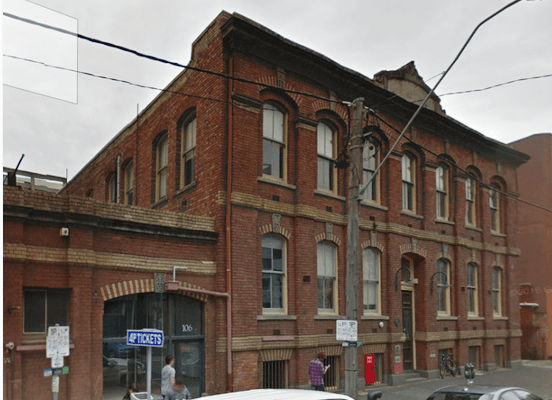
The site of J.G. Lloyd & Co. Pelham Street, Carlton.
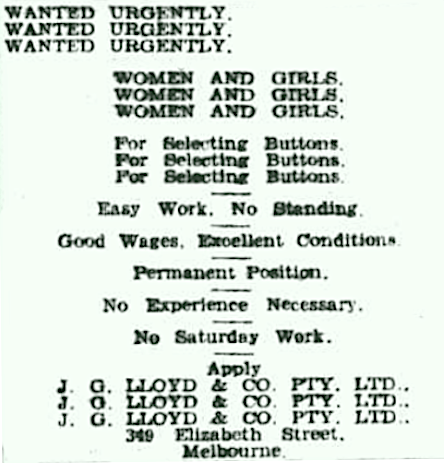
The Argus (Melbourne), May 1946 page 39.
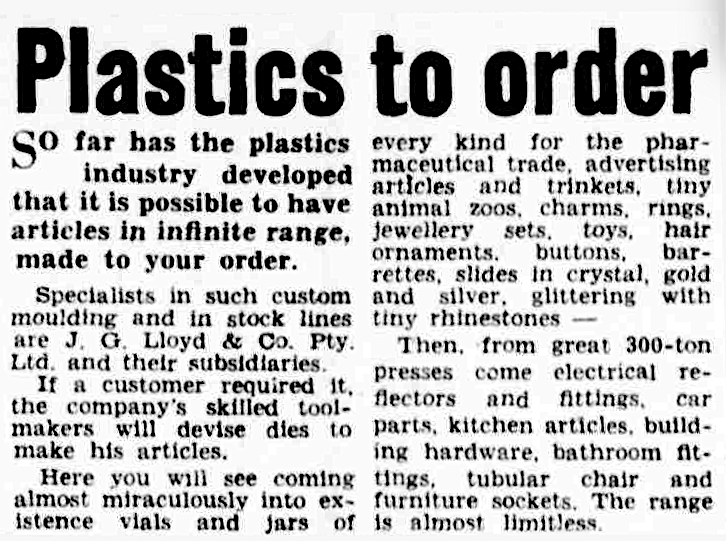
The Argus, 8th September 1953 page 20.
One of the company’s subsidiaries from 1946 was Duranol Co. Pty. Ltd. (Lloyd was one of the directors). Buttons were produced under this name, as well as the plastic MacRobertson and Hoadley chocolate boxes you may find in vintage stores (see above). In 1965 Cope Allman (Australia) Ltd. acquired a majority share of Duranol Pty. Ltd., Modern Mouldings Pty. Ltd. and J. G. Lloyd Pty. Ltd.

The Age, 18th May 1946 page 4.
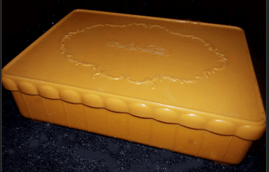
MacRobertson chocolate box, by Duranol.
Another subsidiary started at the same time was Modern Buttons. They were still advertising for staff in 1953.

The Age, 18th May 1946 page 4.
This firm was still in existence in 1956.
John Bowden Plastic Button Pty. Ltd., Melbourne
This company was registered on 30th January 1951 and deregistered in 1988.
Rothfield & Co, South Yarra, was a manufacturer of sewing cottons and threads started in 1934. In 1947 it became Rothfield &Co. Ltd to raise capital and extend business. It acquired or established several subsidiaries, including John Bowden Plastic Buttons Pty. Ltd. In 1952 a fire destroyed £50,000 worth of cotton and £10,000 of machinery as well as a brick building occupied by the button subsidiary. In 1956 they supplied the military with khaki plastic buttons.

The company merged with Peerless and changed its name to Peerless Holdings Limited in 1959. Rothfield’s Sewing Cottons (NSW) Pty. Ltd. was deregistered in 1968, and John Bowden Plastic Buttons in 1987.
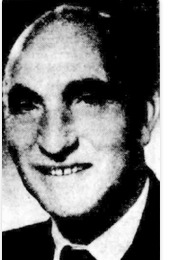
The Herald, 25th November 1947 page 6. Jacob Rothfield.
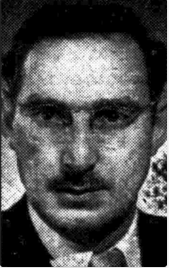
News(Adelaide) 9th March 1953 page 8. Walter Norman Rothfield, chairman and managing director in 1953.
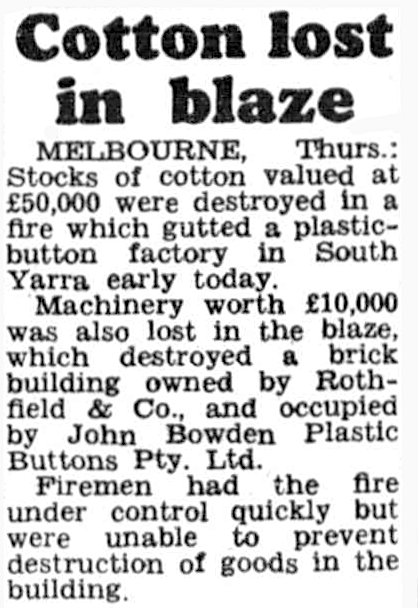
News (Adelaide), 14th August 1952 page 3.
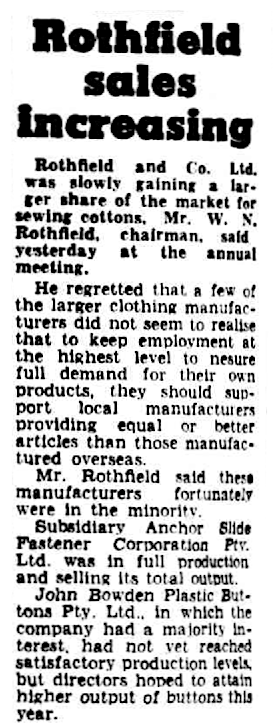
The Argus (Melbourne), 16th October 1954 page 12.
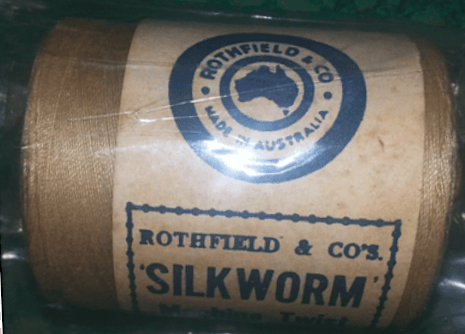
This is a reel of cotton produced by Rothfield, produced for military use during WW2. The mill closed possibly in the 1950s-60s.
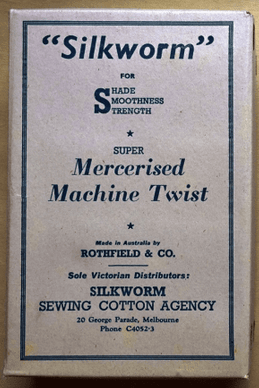
Commonwealth Gazette, 13th September 1956
Landico Pty. Ltd., Coburg
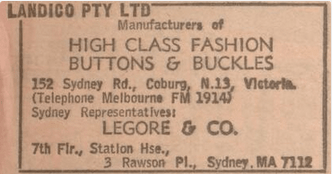
1950 Sydney telephone directory.
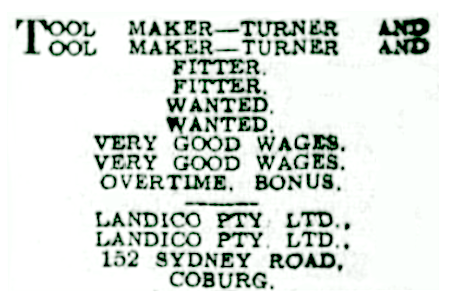
The Age (Melbourne), 22nd September 1954 page 29.
From 1949-1956 this “manufacturer of high class buttons” advertised for staff. They also sought salesmen in Gippsland, Western Victoria, Adelaide, Sydney and in Tasmania for their products. They registered designs for buttons (class 3) in 1955. In 1951 they had a contract to supply brush holders to the military.
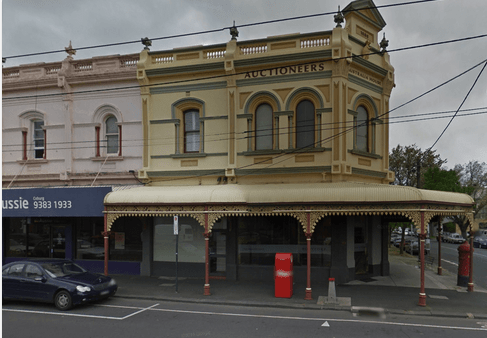
148-154 Sydney Road, Coburg. The Landico office would have been in the right half of the Aussie Home Loans site. This strip is part of a heritage precinct dating from the late 1880s.
The buttons are solid metal with a bit of weight to them. The backs are rough and the edges around the holes are sharp. Below right is a Landico button, and an unmarked button of the same design.
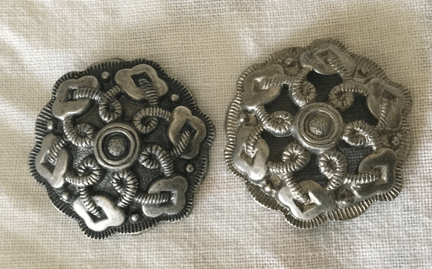
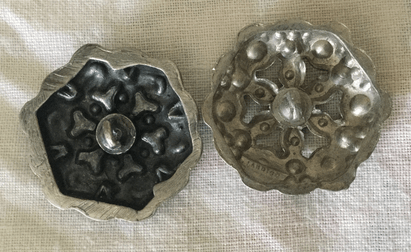
This Landico design is also found by Beutron:
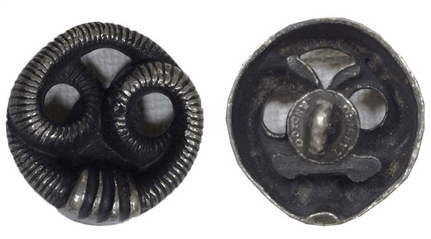
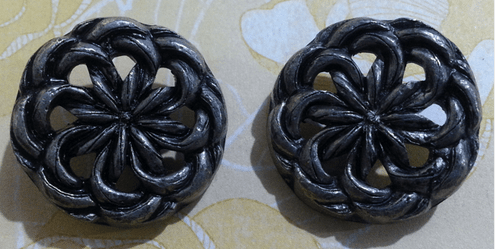
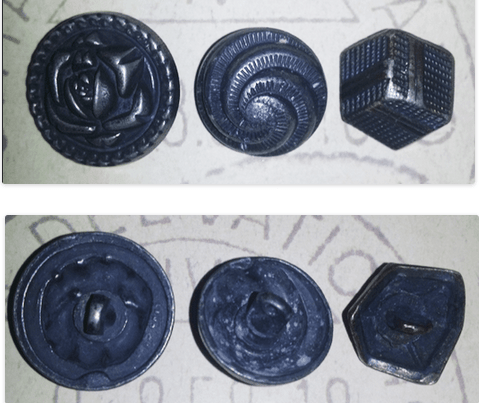
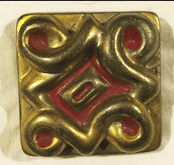
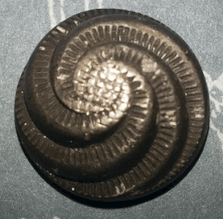
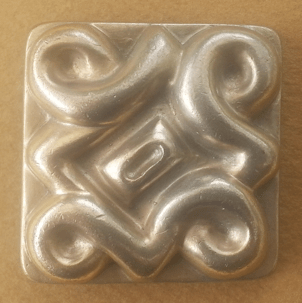
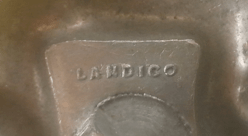
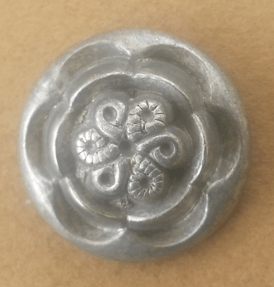
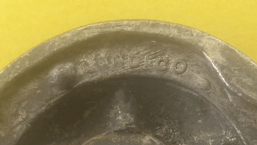
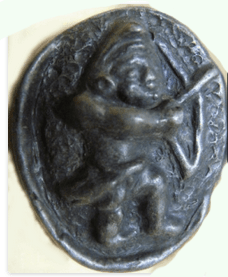
Perhaps a dwarvish archer? The Landico mark is on the underside.
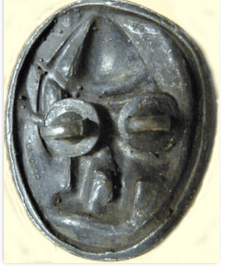
The button is supported by two shanks.
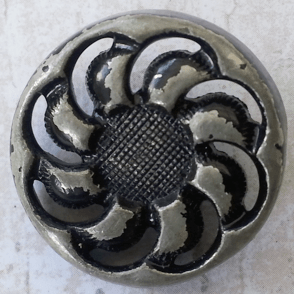
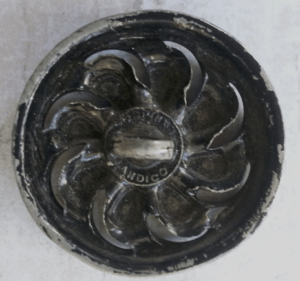
The design below was used to make plastic buttons by General Plastics and its predecessors since 1930 or 40s.
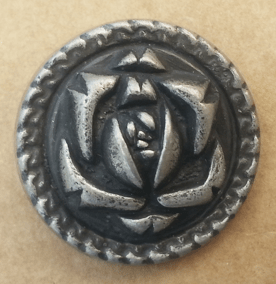
In 1951 Landico Pty Ltd was investigating the method of metal plating plastic that G.Herring had obtained license for some years before. All Landico buttons I have seen so far appear to be metal, like above, some with enameling.
Marie Gardner, Sydney
‘Statement’ buttons were popular after WW2 to decorate the otherwise austere style of clothing in vogue at the time. One local maker of these was Grant Featherston with his beautiful glass buttons (see separate page). Another producer was Marie Gardner.
Marie Gardner, 1899-1971, began studying pottery at Sydney Technical College in 1938. In 1947 she set up a small pottery studio in her backyard in Harbord, Sydney, and produced vases, lamps, wall pockets, cruets and other decorative pieces.
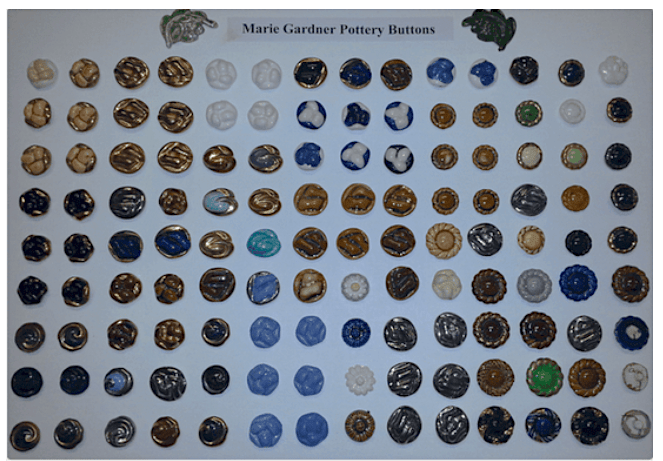
Carol and Ian’s collection.
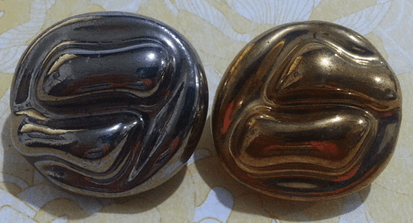
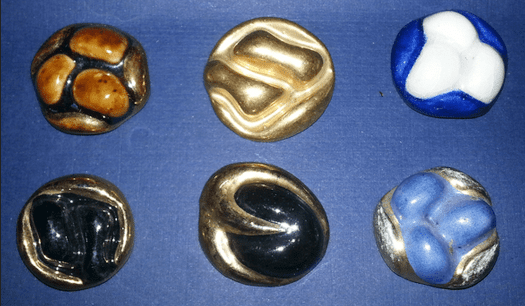
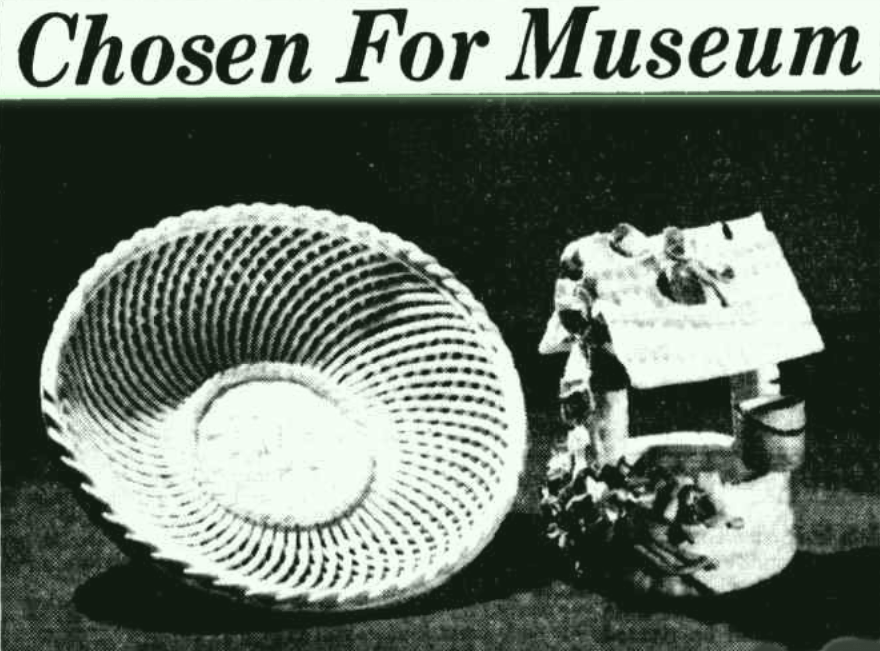
The Sunday-Herald 26th July 1953 page 22. The flower-decorated wishing well by Marie N. Gardner was closen for the Applied Science in Sydney.
The buttons were very successful, as after WW2 European buttons could not be imported for a time. There were around 12 different moulds with many colour and finish variations.
Meyer Manufacturing Company, Melbourne
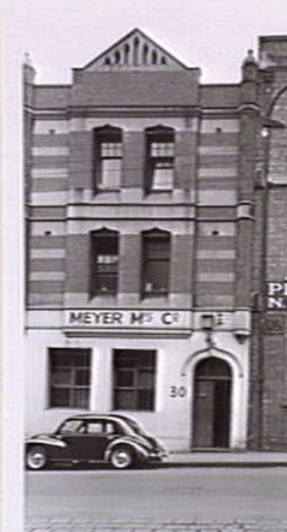
State Library Victoria 1950 photo. https://www.slv.vic.gov.au/pictoria/gid/slv-pic-aab67468
The directors of this manufacturing and engineering company were Norman Rothfield (possibly the same man as Walter Norman Rothfield of Rothfield & Co.) and Samuel Mark Goldbloom from around 1940. They were located at 30 Little Lonsdale street until 1951 when they moved to Burwood Road, Auburn. They produced pressed metal and plastic items.
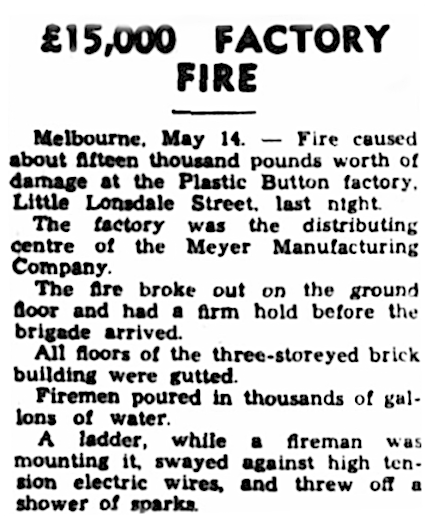
Barrier Daily truth (broken Hill) 15th May 1951 page 1.
Nichol Industries ( also Bertram Badges/Leda Badges)
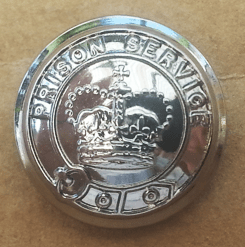
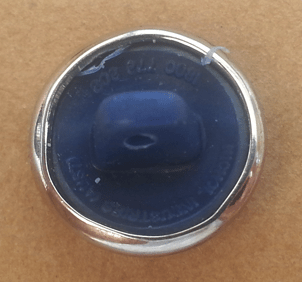
Around the edge of the plastic lining, very small, is ‘Nichols Industries (Aust) and a phone number.
Barry Nichol began an apprenticeship with the Barr Brothers (from 1918) in 1952. On graduating , the family bought the firm and registered it as Barr Bros Pty. Ltd. in 1958. They specialised in engraving, badge making, etc. By 1970, after merging with Bertram badges and building a new factory, the firm was renamed Nichol International P/L. They currently operate from Nunawading, Melbourne.
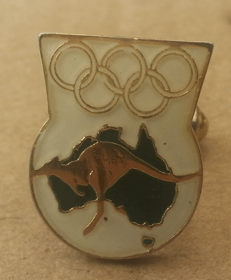
Marked Lega Melb. 1956 Melbourne Olympics cuff link.
Nikki Tervo Designs

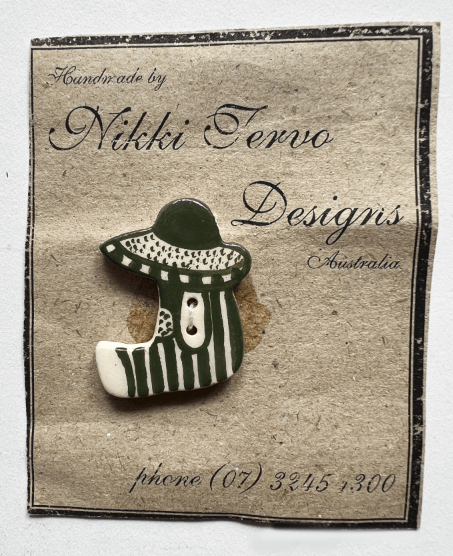
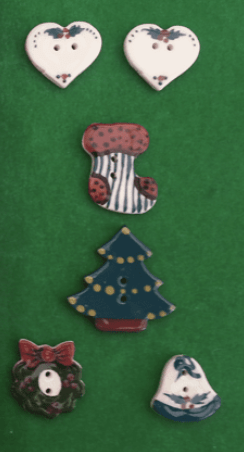
Nikki Tervo Designs is a craft-ware business started in 1995 and based in Brisbane. It is now, according to the website, the largest ceramic button business in Australia.
See https://nikkitervodesigns.com.au/product-category/ceramic-buttons/
Olson Badges, Adelaide

?SA Government button.
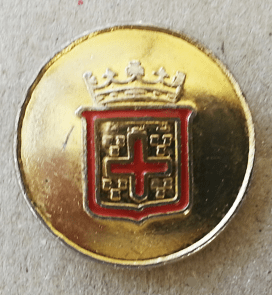
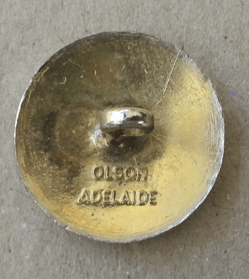
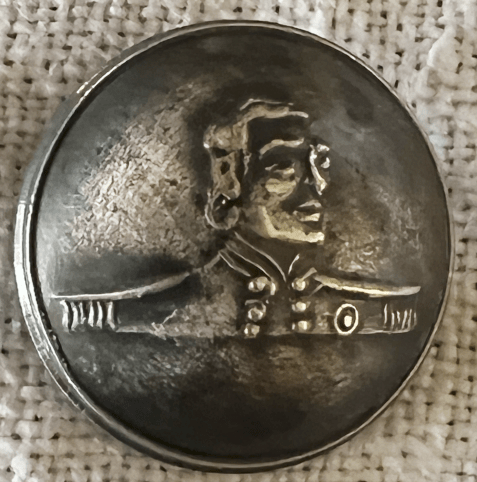
Backmark: Olson Adelaide. Possible Matthew Flinders Bicentennial button.
This company has been operating near Adelaide from 1966 as Allan J. Olson Pty. Ltd. making badges, medallions, name bars and uniform buttons. Allan Olson started as an apprentice in 1936 with S. Schlank & Co., working with them until 1965 then starting his own business. In 1971 he bought the former Schlank plant, equipment (including many old dies) and their factory located in Forrestville, South Australia.
See http://www.olsonbadges.com.au/index.php/all-buttons
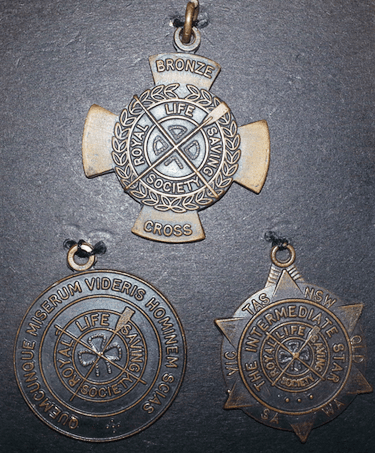
My husband’s swimming medallions by Olson badges.
Ornacraft Pty Ltd., Sydney
In 1939 this business was formed from the previously named Ornacraft Company by Campbell McQuarrie Miller (1893-1984) and John Albert Cooney (1894- ). They registered button designs in 1947. This company operated from at least 1940 to 1950 at 60 King St, Newton, Sydney, as plastic button manufacturers. The company possibly supplied clothing manufacturers rather than retail, as I have seen no cards of Ornacraft branded buttons.
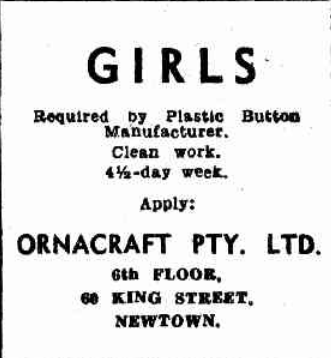
The Daily Telegraph, 20th February 1950 page 16.
This building still stands as a apartment/business/hotel complex. A photo of the building and some employment adverts follow, from The Sydney Morning Herald. The company was deregistered in 1966.
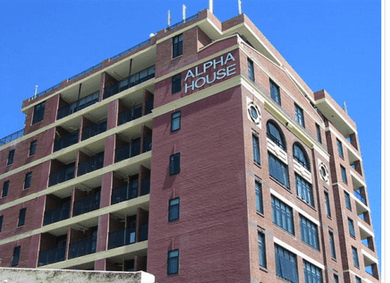
58-60 Kings St, Newtown.
Paladin Products Pty. Ltd., Sydney

Dun’s Gazette for NSW, 1950.
This business was not successful, as it was being offered for sale in January 1952 by the liquidators. Matthew Felix Lipworth was a chemical engineer from South Africa. Mr Phillips may have been Frederick John Phillips, a salesman.

Mr Lipworth, 1950.
Precision Pressed Metal Company Ltd., South Australia
This company started in Gawler in 1939. During the war it was turning out Defence buttons, military hardware and steel helmets. In 1945 it was sold to James Robert Holden (of the famous Holden motor car family) and moved to 350 Port Road, Beverley. It was still going in 1954.
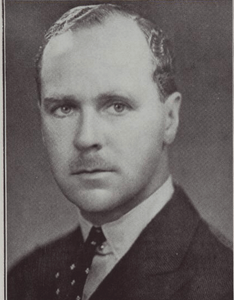
J. R. Holden
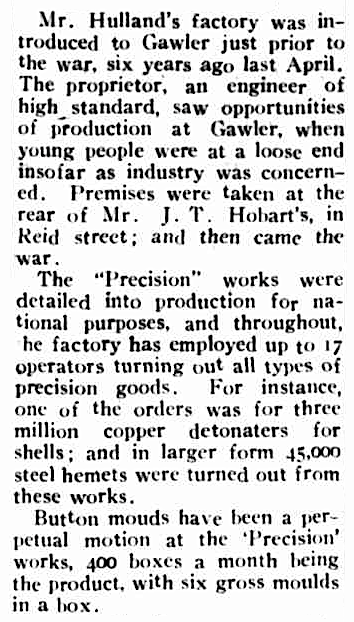
Bunyip (Gawler, SA), 25th May 1945 page 1.
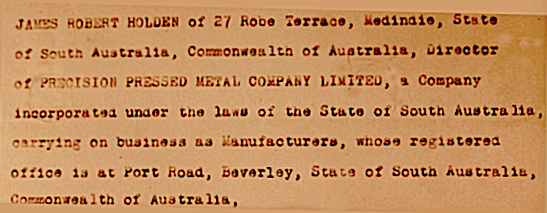
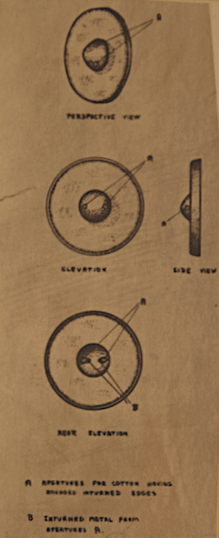
Details from patent application in the National Archives, Canberra.
Raynors Pty. Ltd., NSW
Commonwealth Government Gazette, 9th April 1953.
Raynors were engravers who expanded into die-casting and general metal engineering. They operated from at least 1932. The company was in liquidation in 1988.
Solite Mouldings Pty. Ltd., Sydney
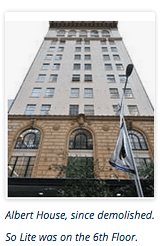
In a 1948/9 phone directory for Sydney, there was the listing for ‘So-lite Mouldings’ under button manufacturers and wholesalers, with a G. E. Rhodes as the proprietor. By 1950 the company had been listed on the stock exchange, with new owners.

Dun’s gazette for NSW, December 1950. page 235.
Not long after, a proposal to form a new company from So Lite Mouldings and another firm was advertised. Unfortunately the new firm was already in financial difficulties by 1952 and in liquidation the following year. Somehow the business kept going, as these buttons date from 1966-8 due to the dual pricing.
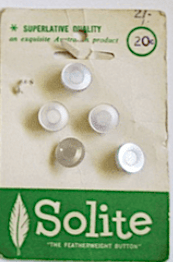
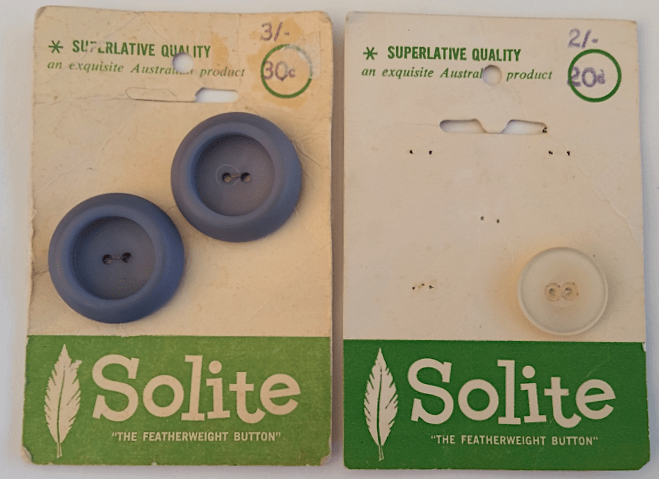
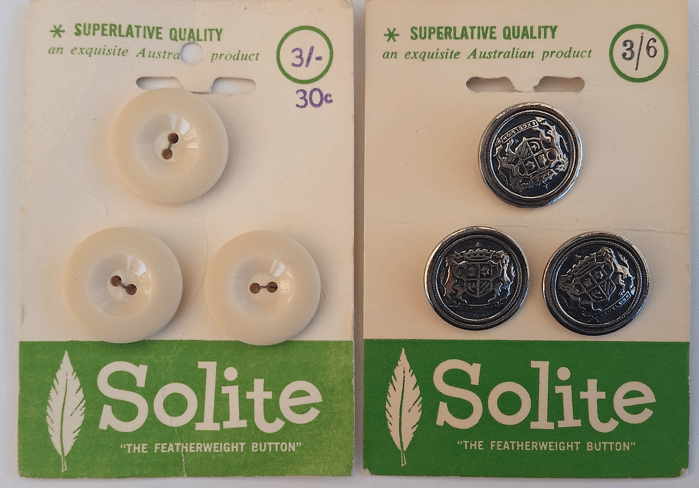
Stanilsaw (Stacha) Halpern
Some artists produced ceramic studio buttons (i.e. in small quantities for a short period as artistic items). One such artist was Stanislav (Stacha) Halpern. He was born in Poland and fled to Melbourne in 1939. He was a painter, potter, print maker and sculptor.
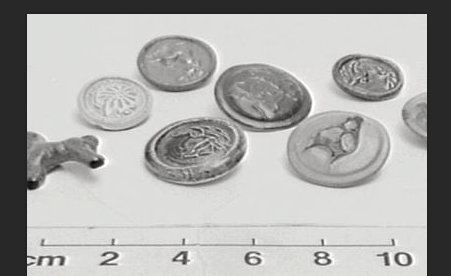
A collection of his buttons at MAAS from 1945. Unfortunately, the original image is not available.
Swann & Hudson

Swann & Hudson were based in Frankston from 1947 to around 1990. Along with K. G. Lukes, Brim Medallions and Wheelen’s Castings they were amalgamated into J. J. Cash.
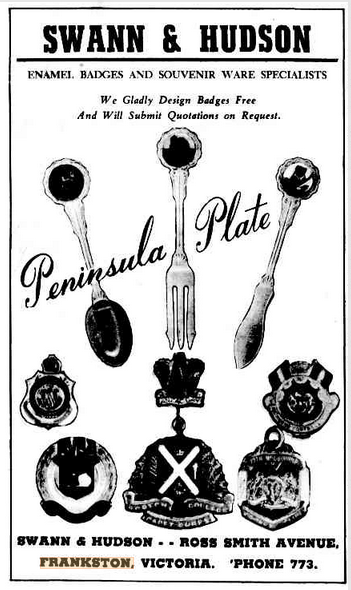
The Argus, 7th January 1954 page 28.
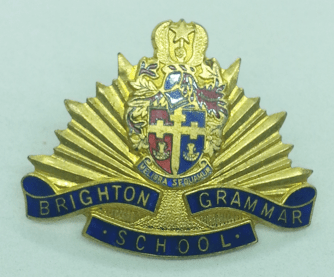
Swann & Hudson mainly did badges rather than buttons.
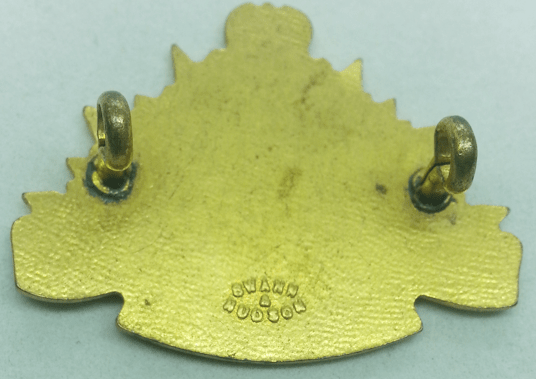
Wallace Bishop
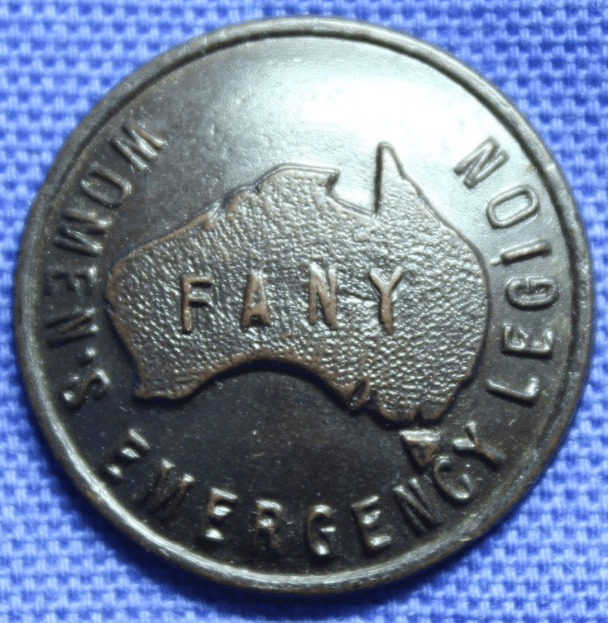

Mr Bishop was a British migrant who came to Australia in 1908 from Birmingham. He stated a jewellery store in 1920 in Adelaide Street, Brisbane. He had come to Australia to become a farmer, which he also did around 1932. His son, Carl, and grandson Wallace would also join the firm. The firm continues in family control.
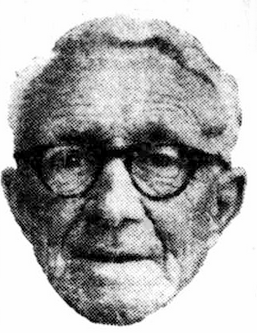
Wallace Bishop
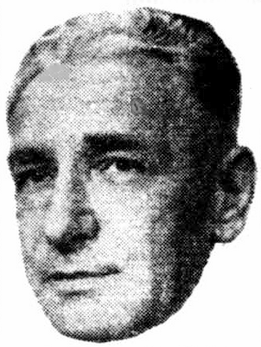
Brisbane Telegraph, 23rd November 1954 page 20. Carl Bishop
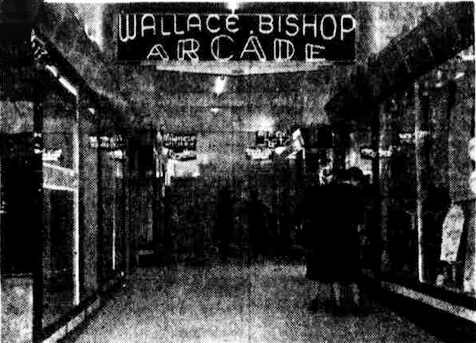
The Telegraph (Brisbane), 25th September 1939 page 15. The Wallace Bishop Arcade, opened in 1939.
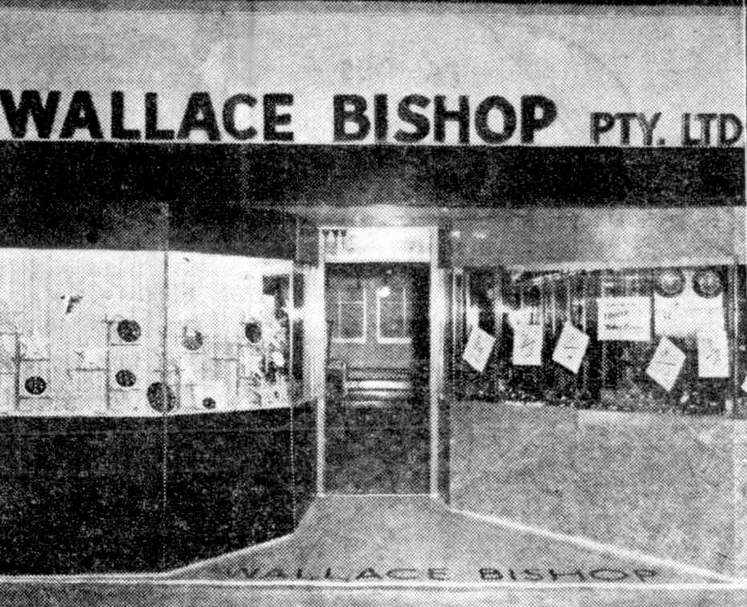
Brisbane Telegraph, 23rd November 1954 page 19. The new shop front in Adelaide Street.

